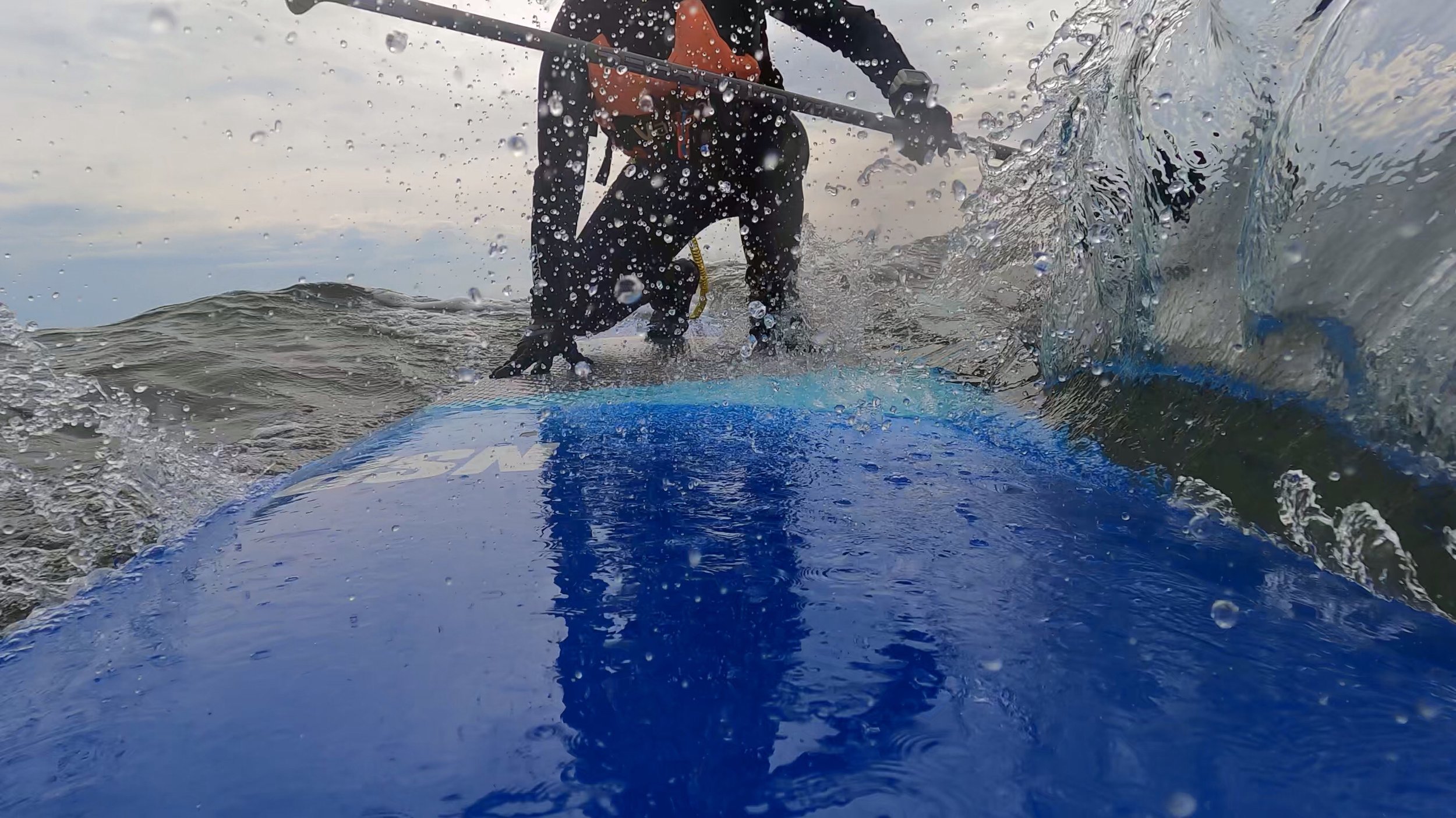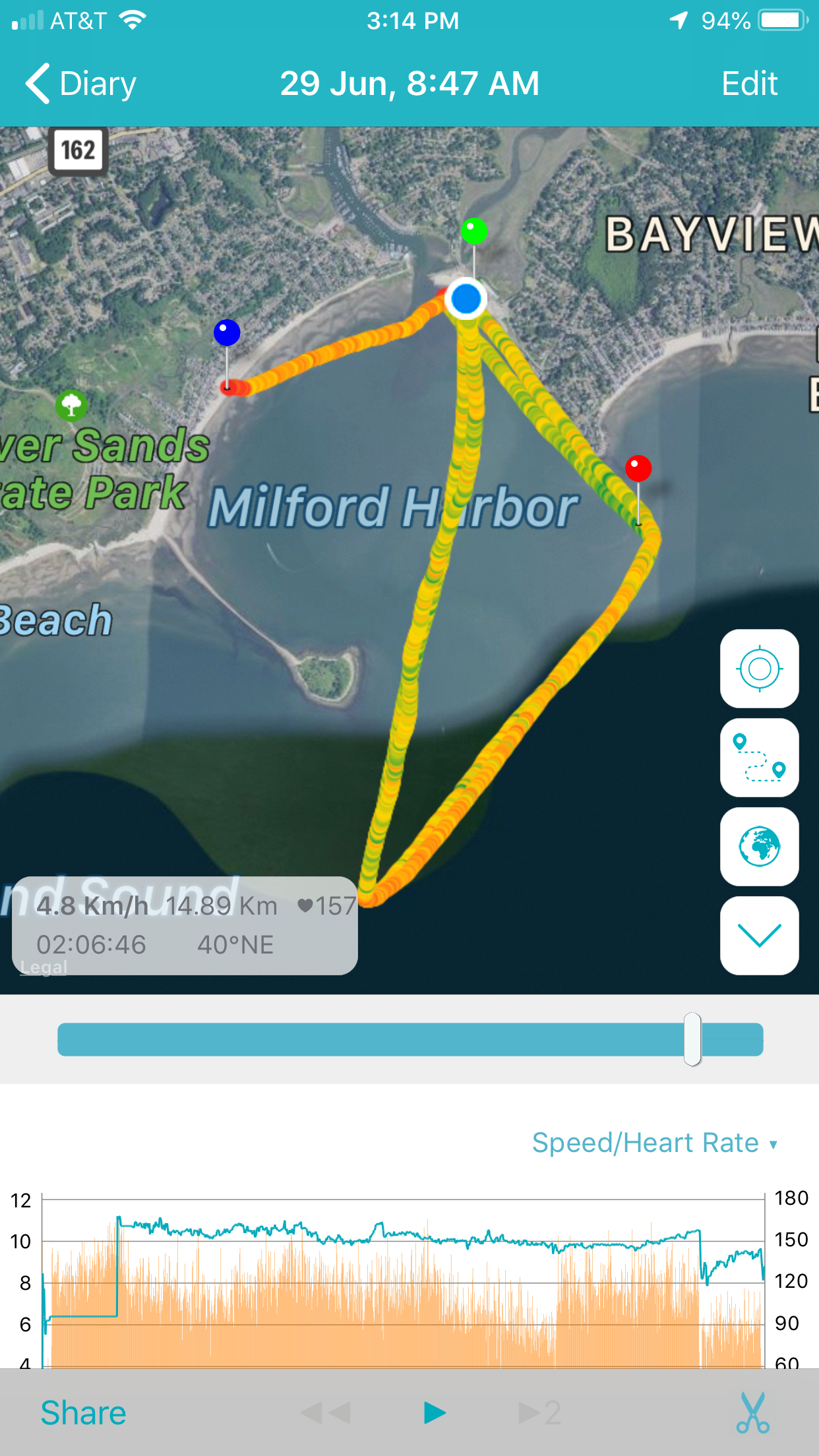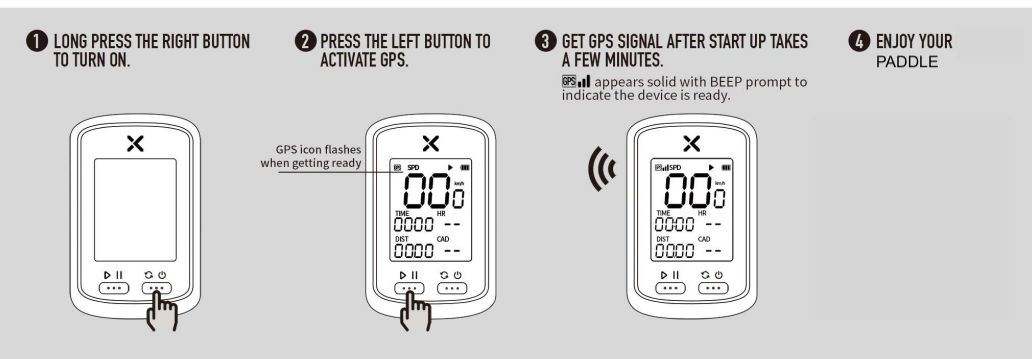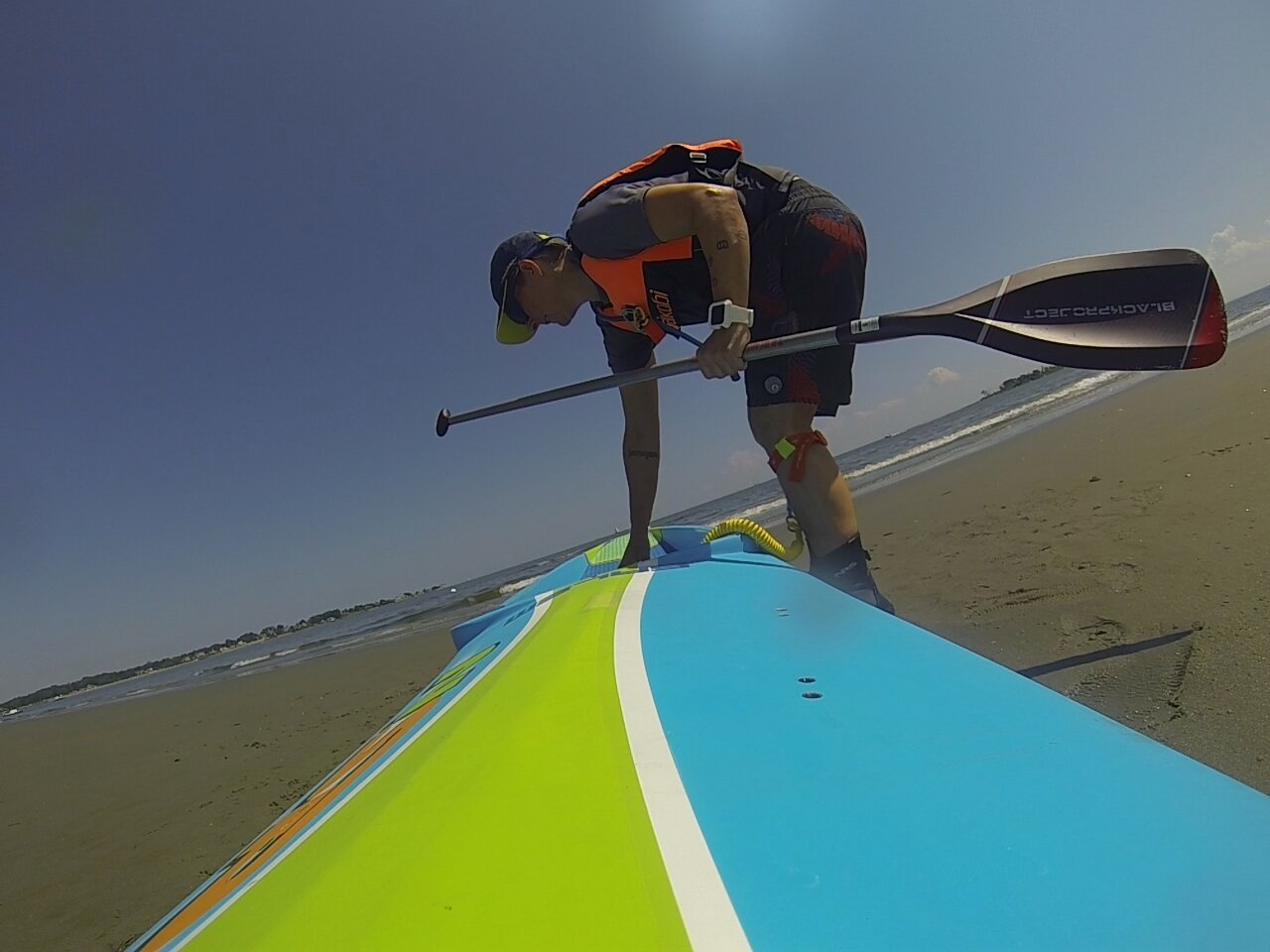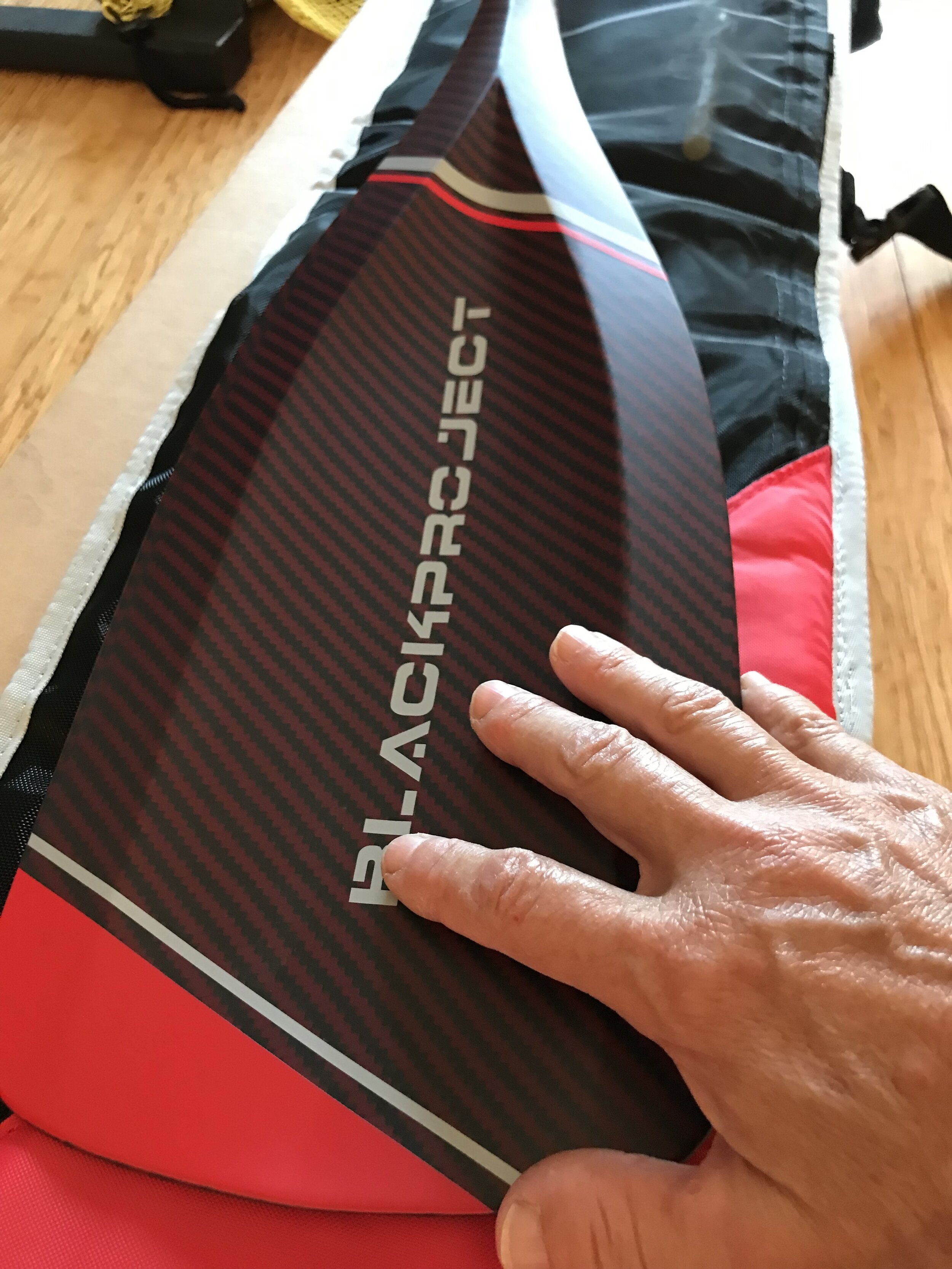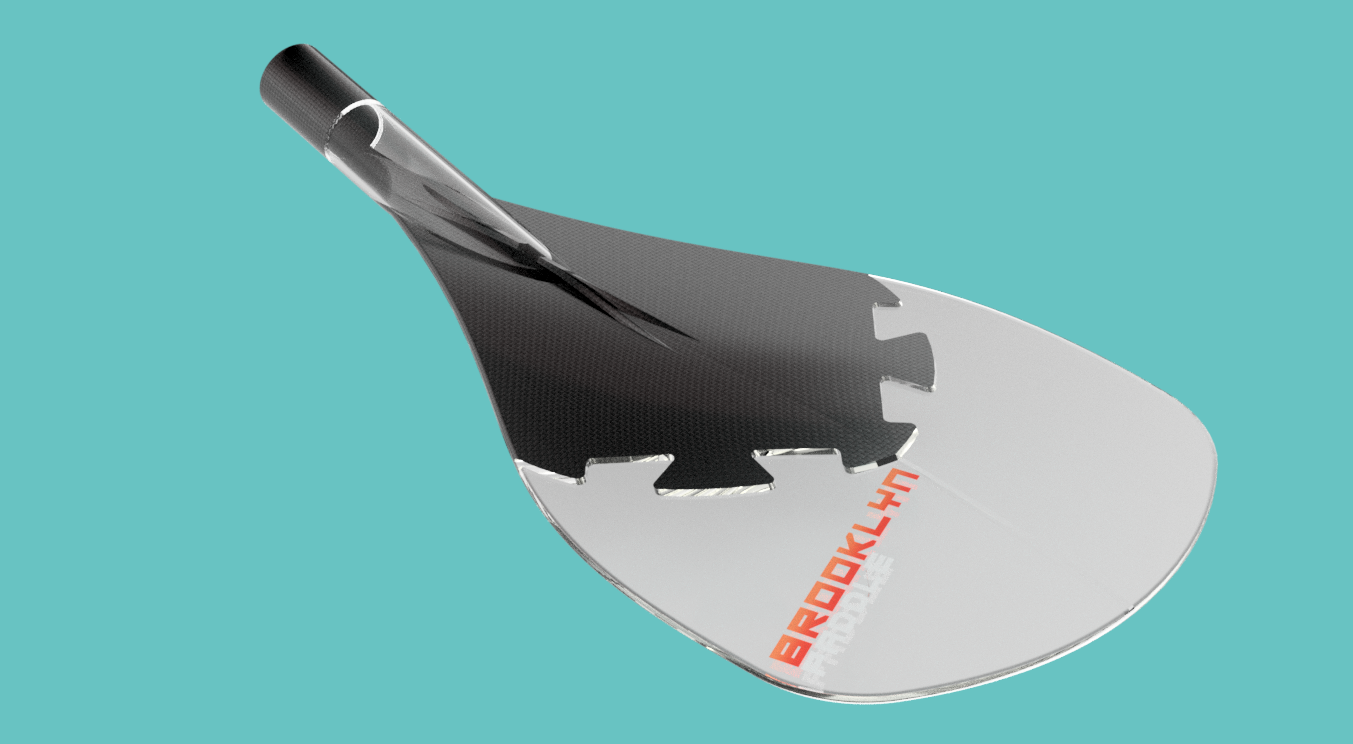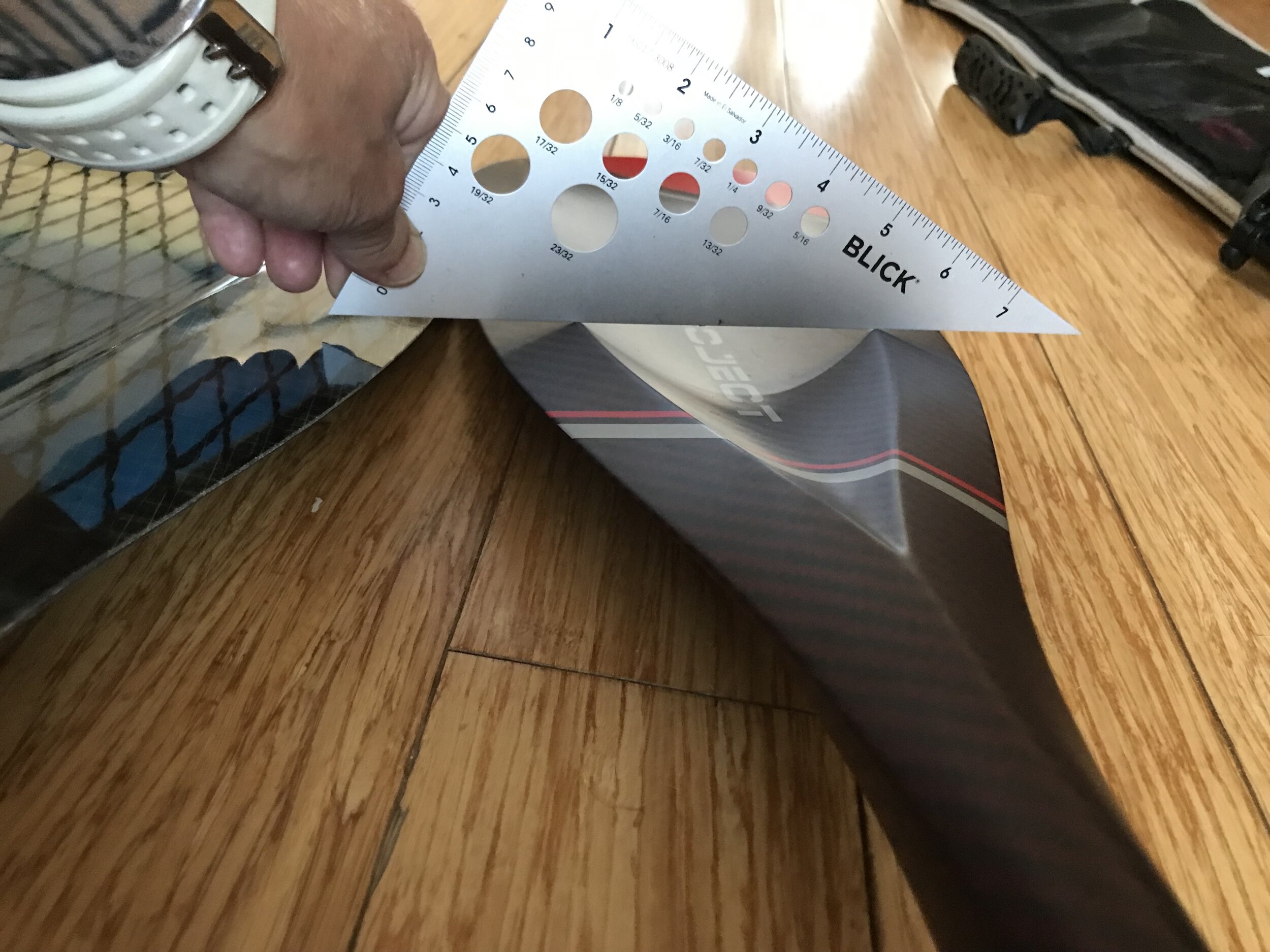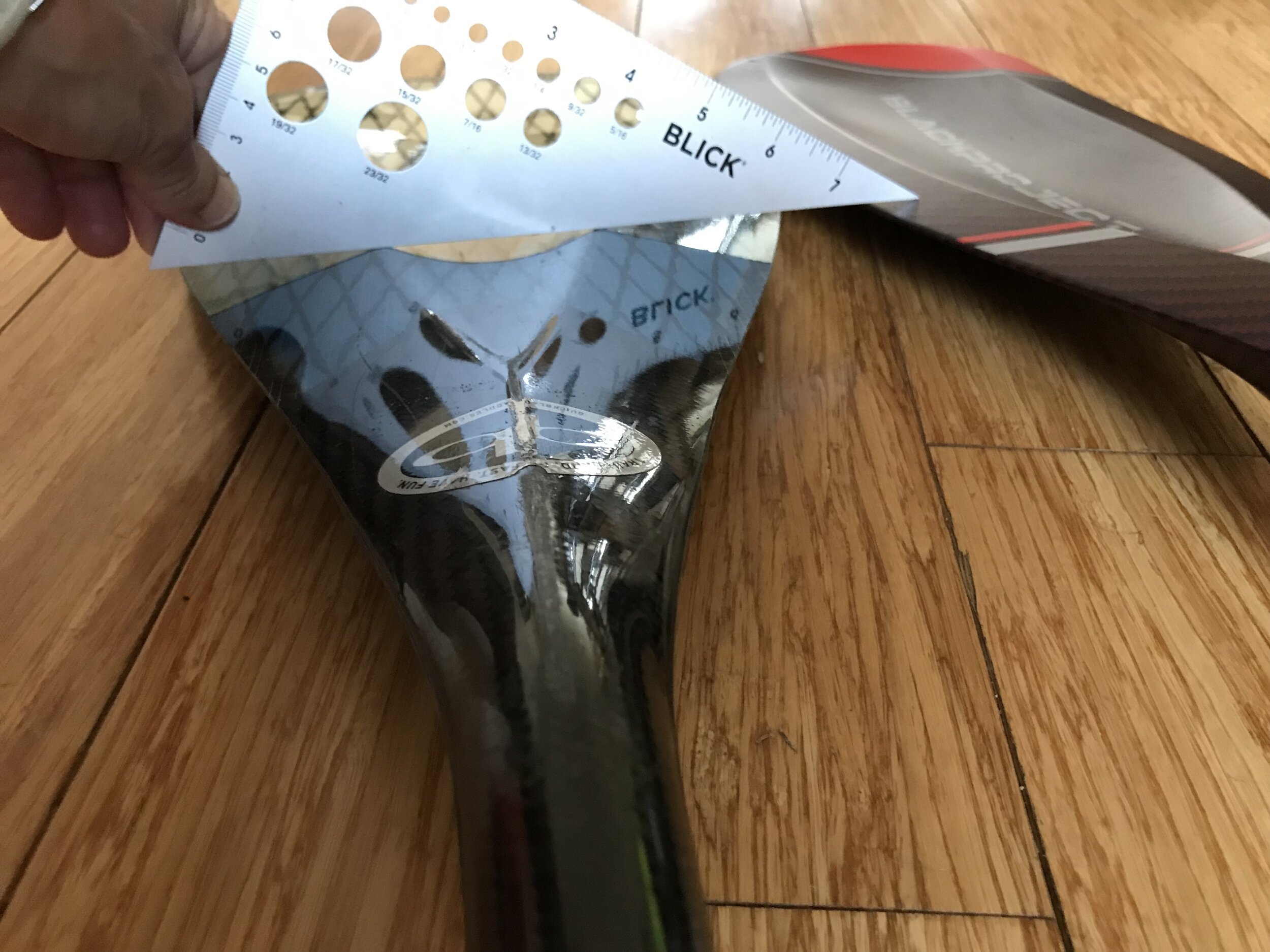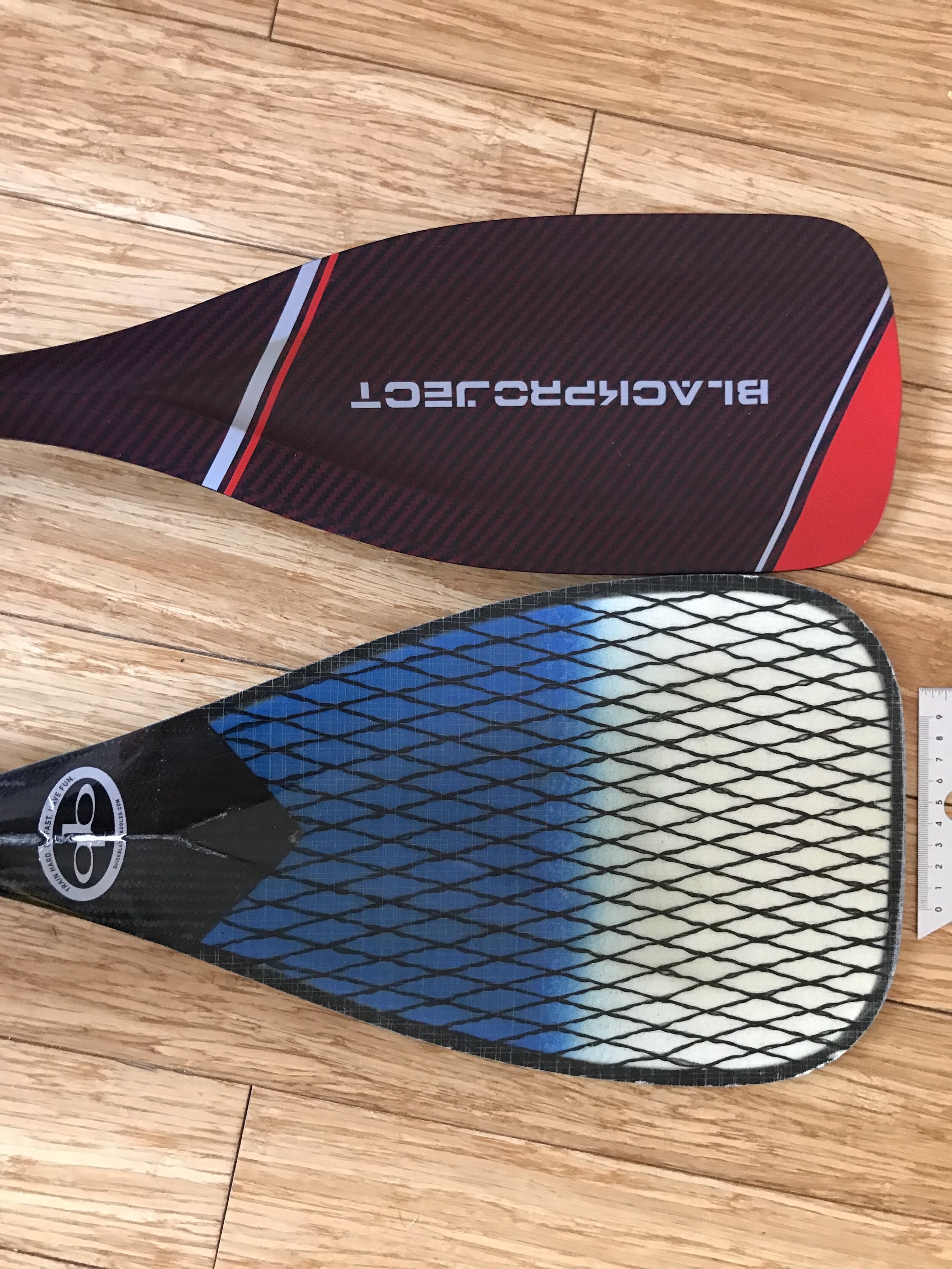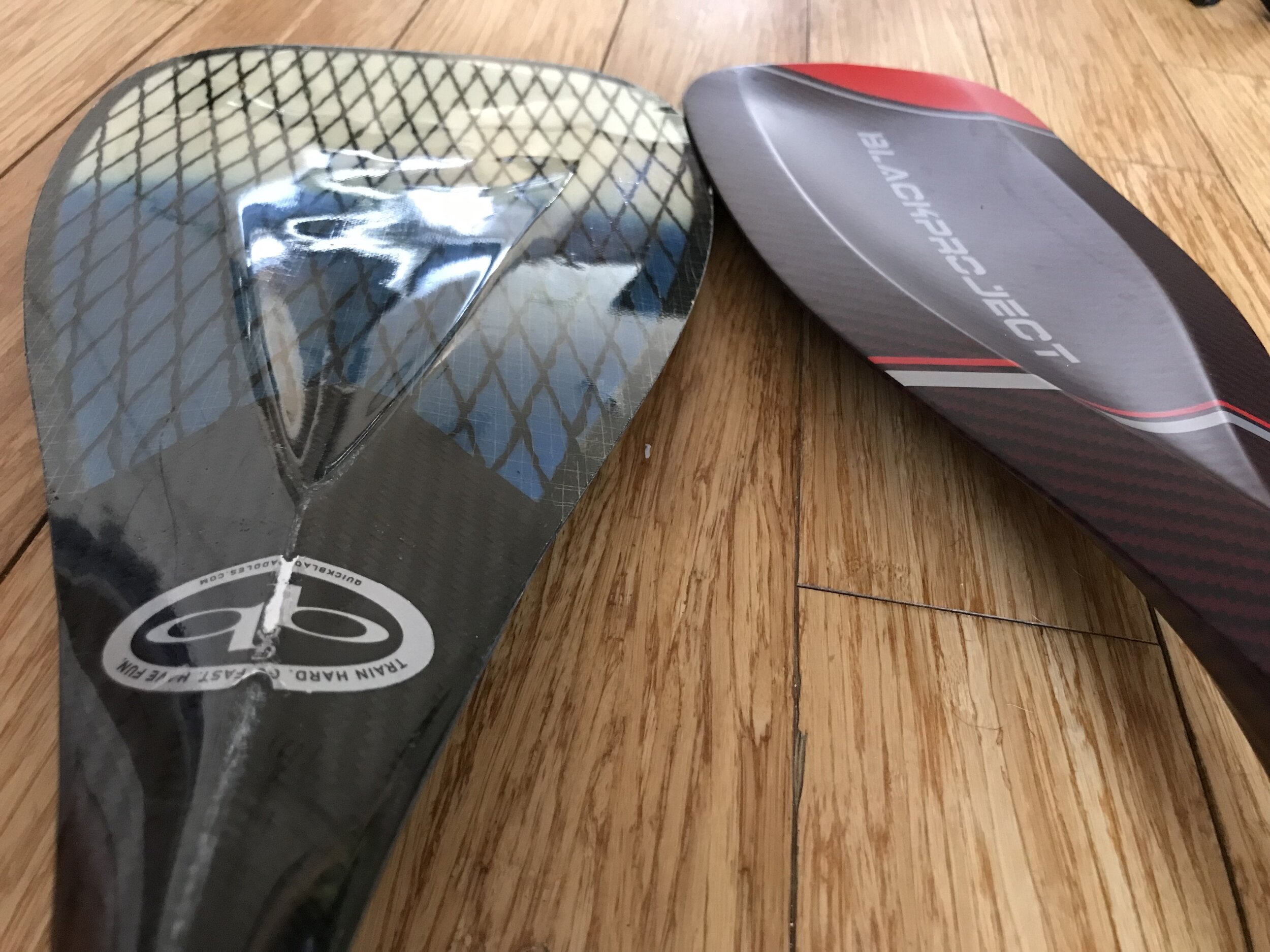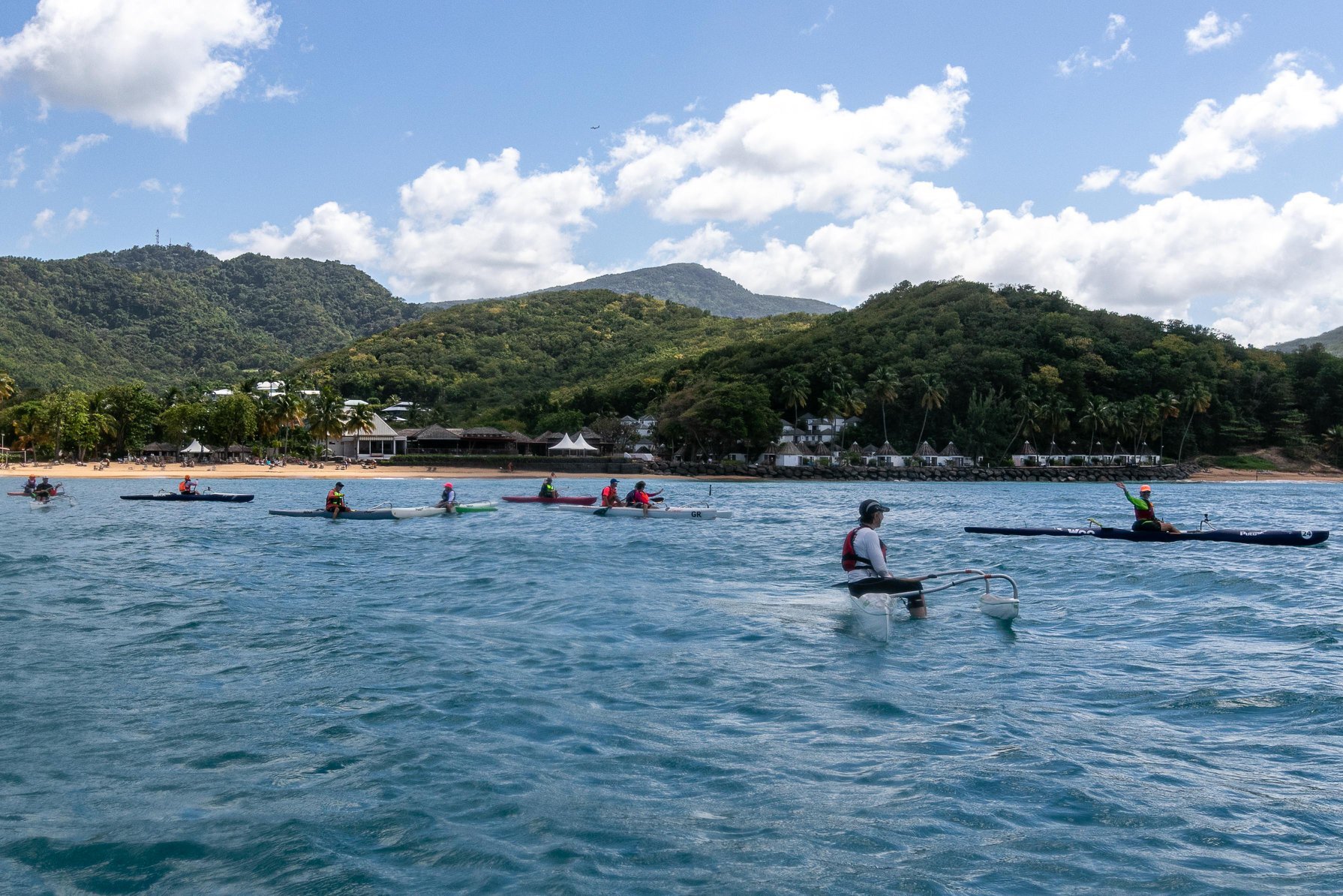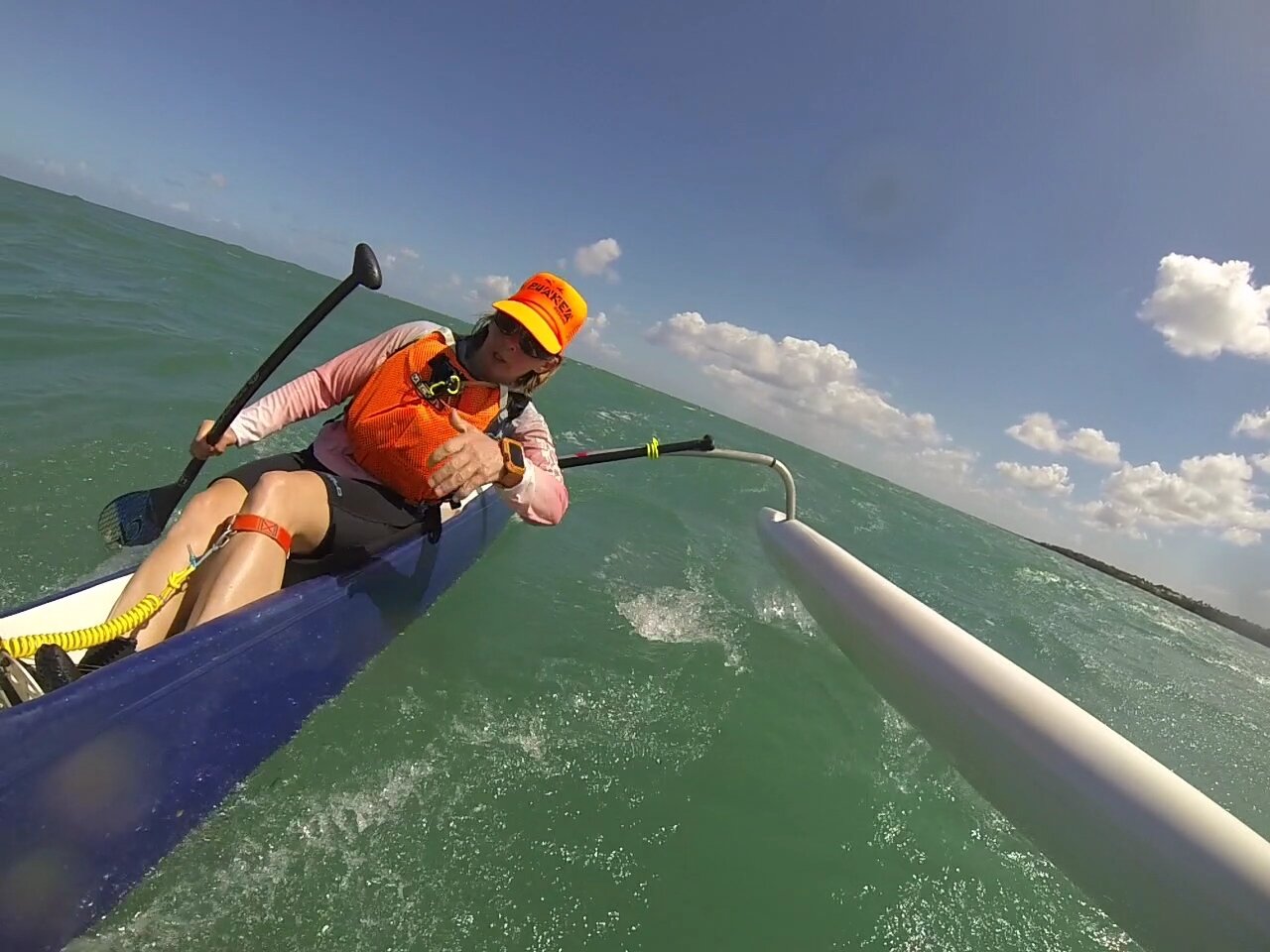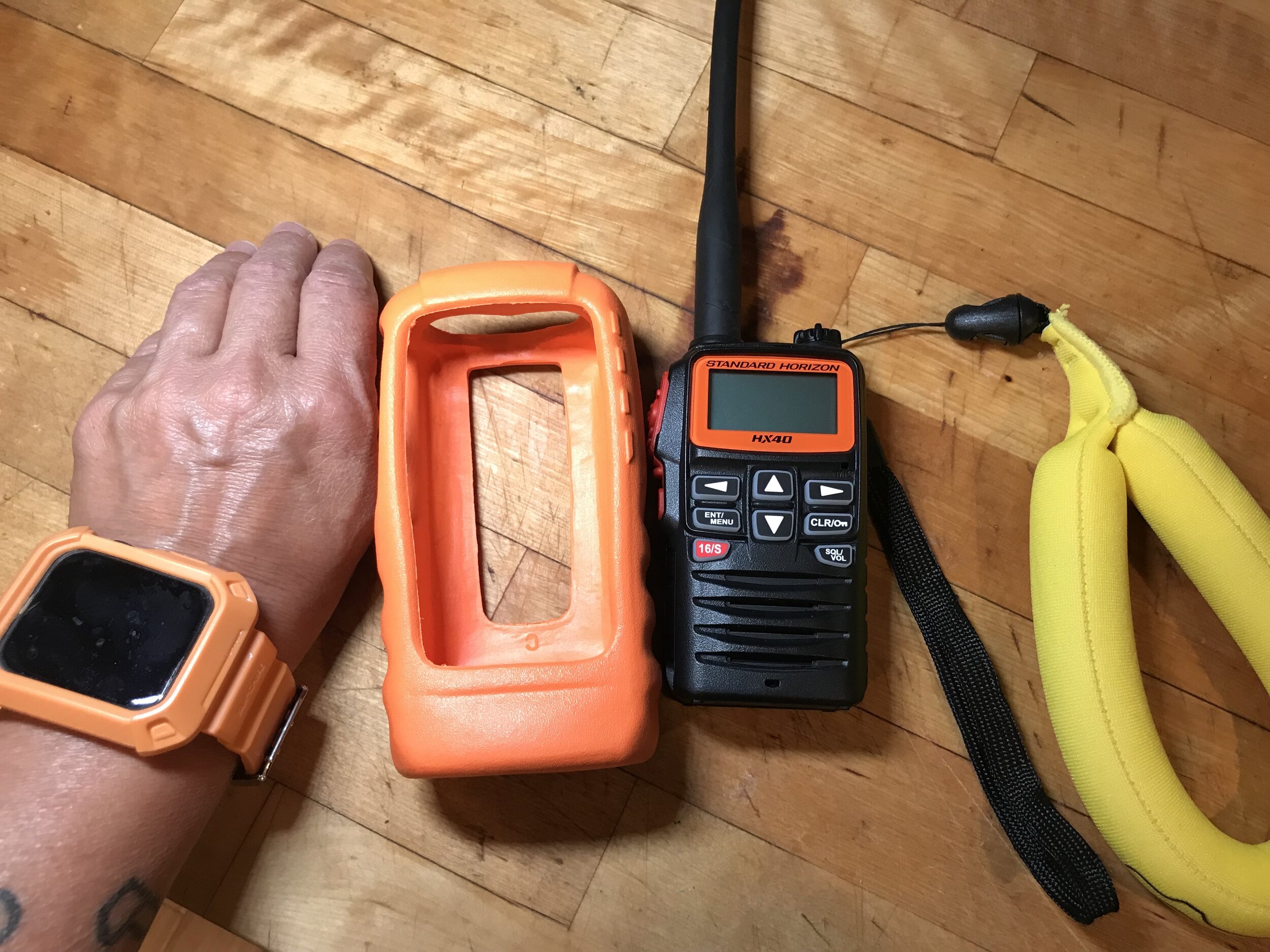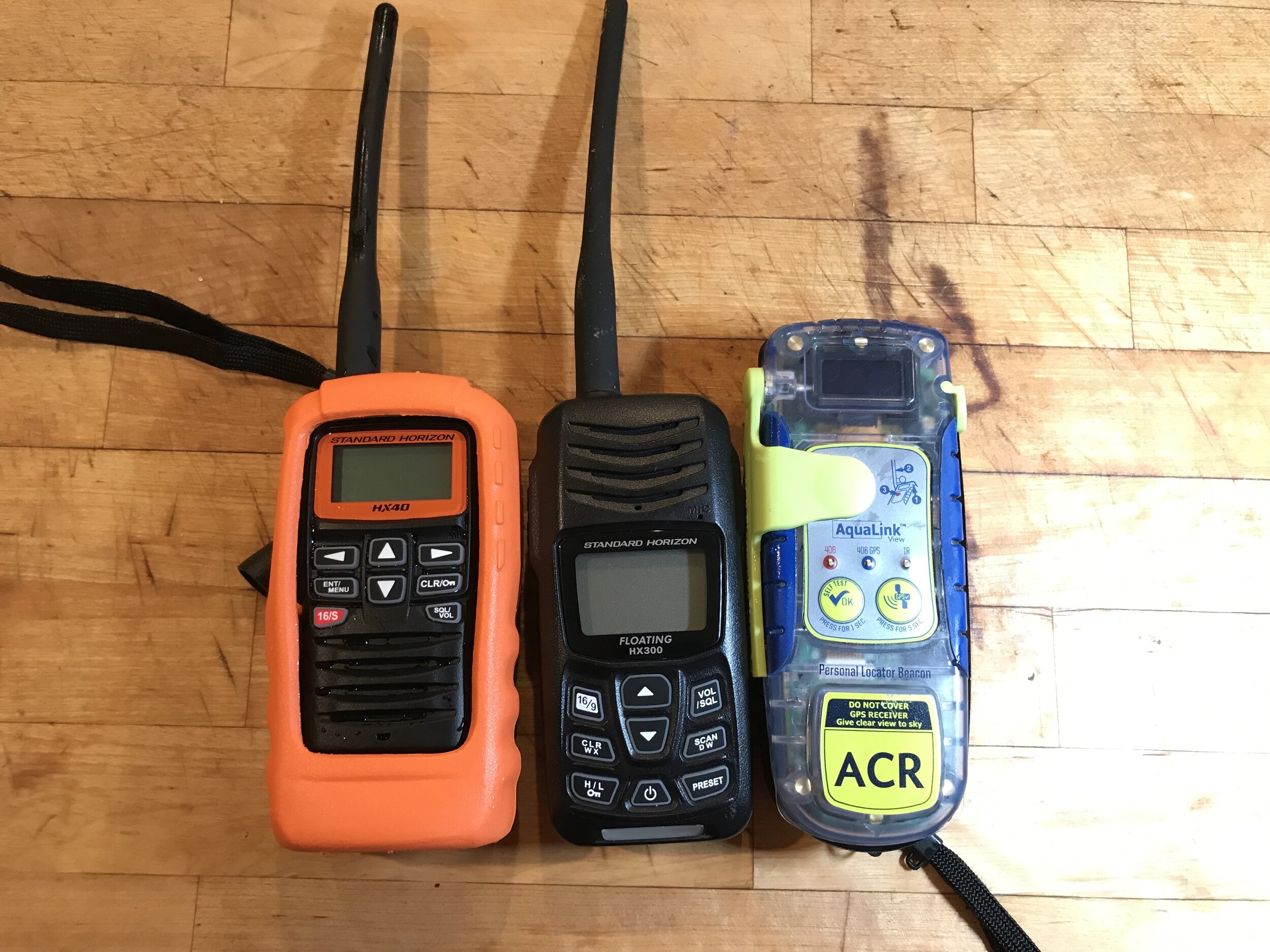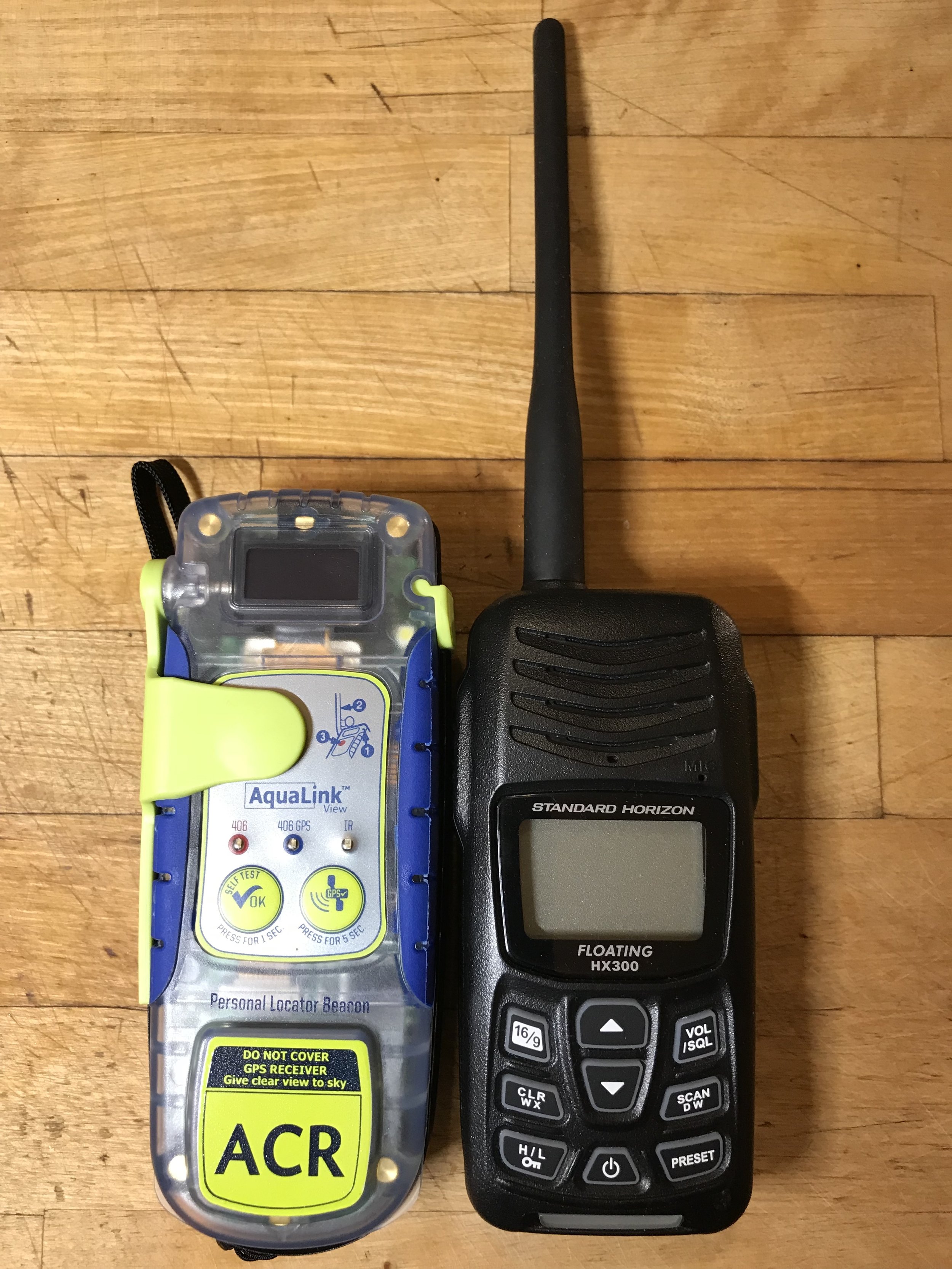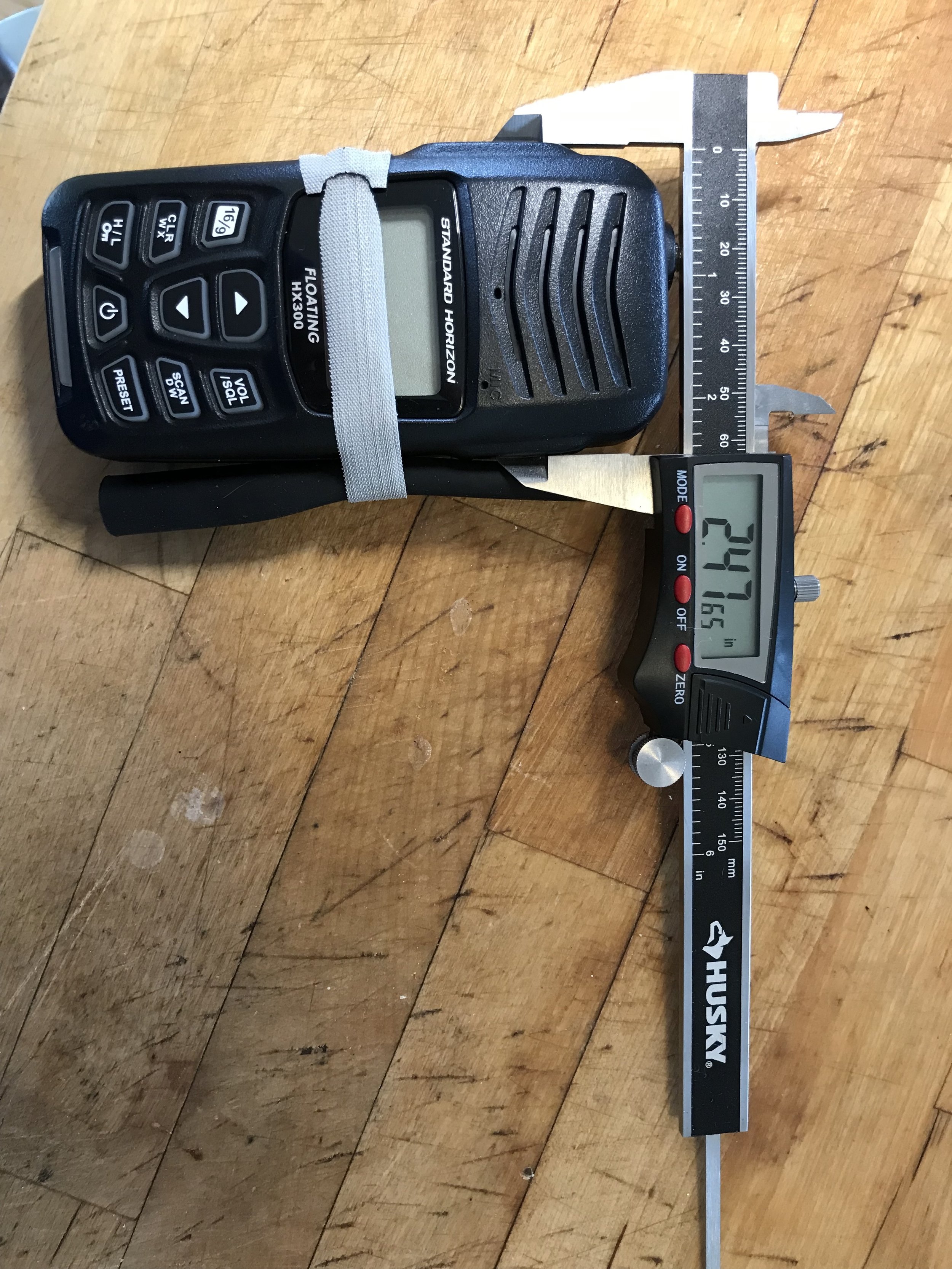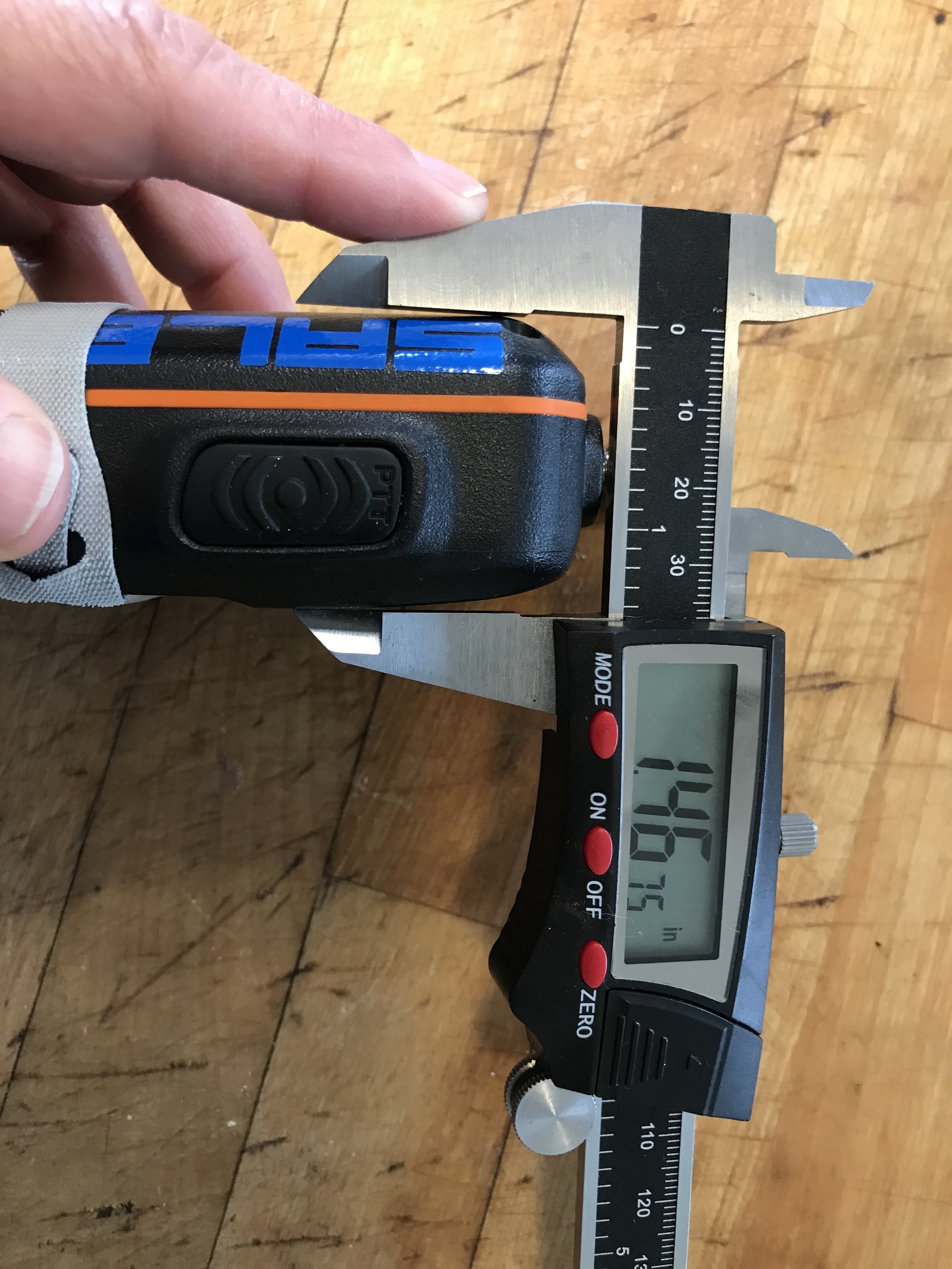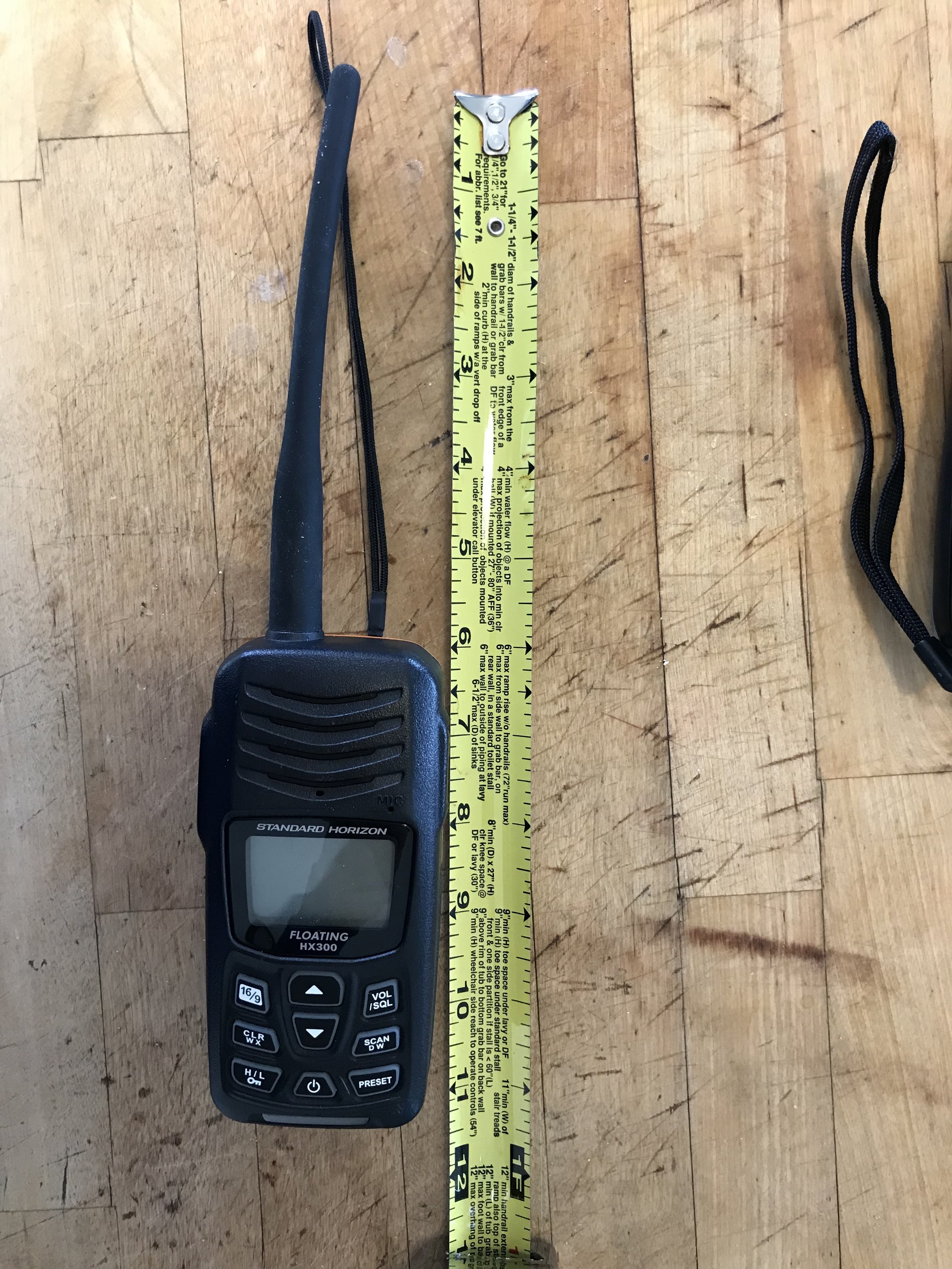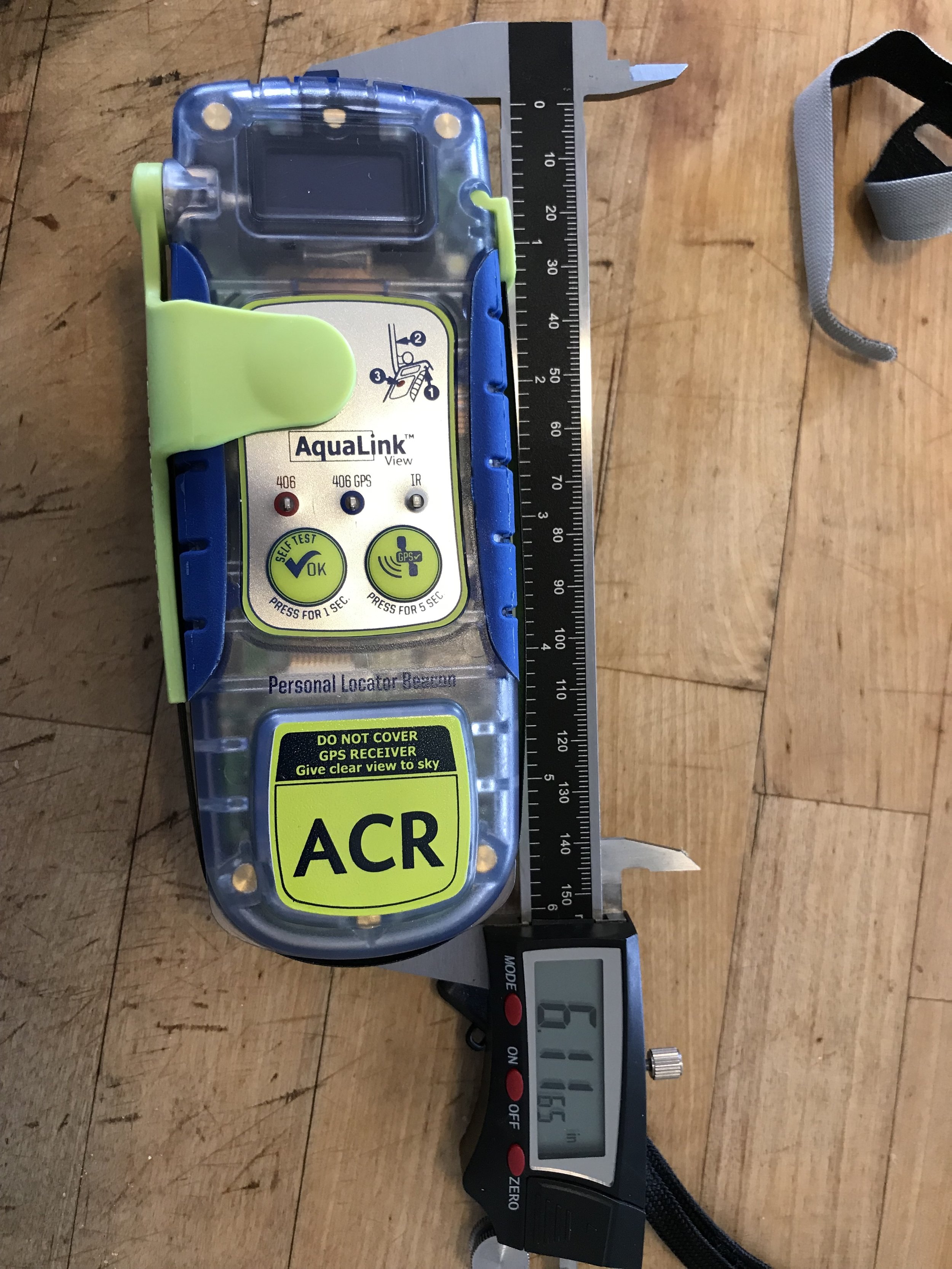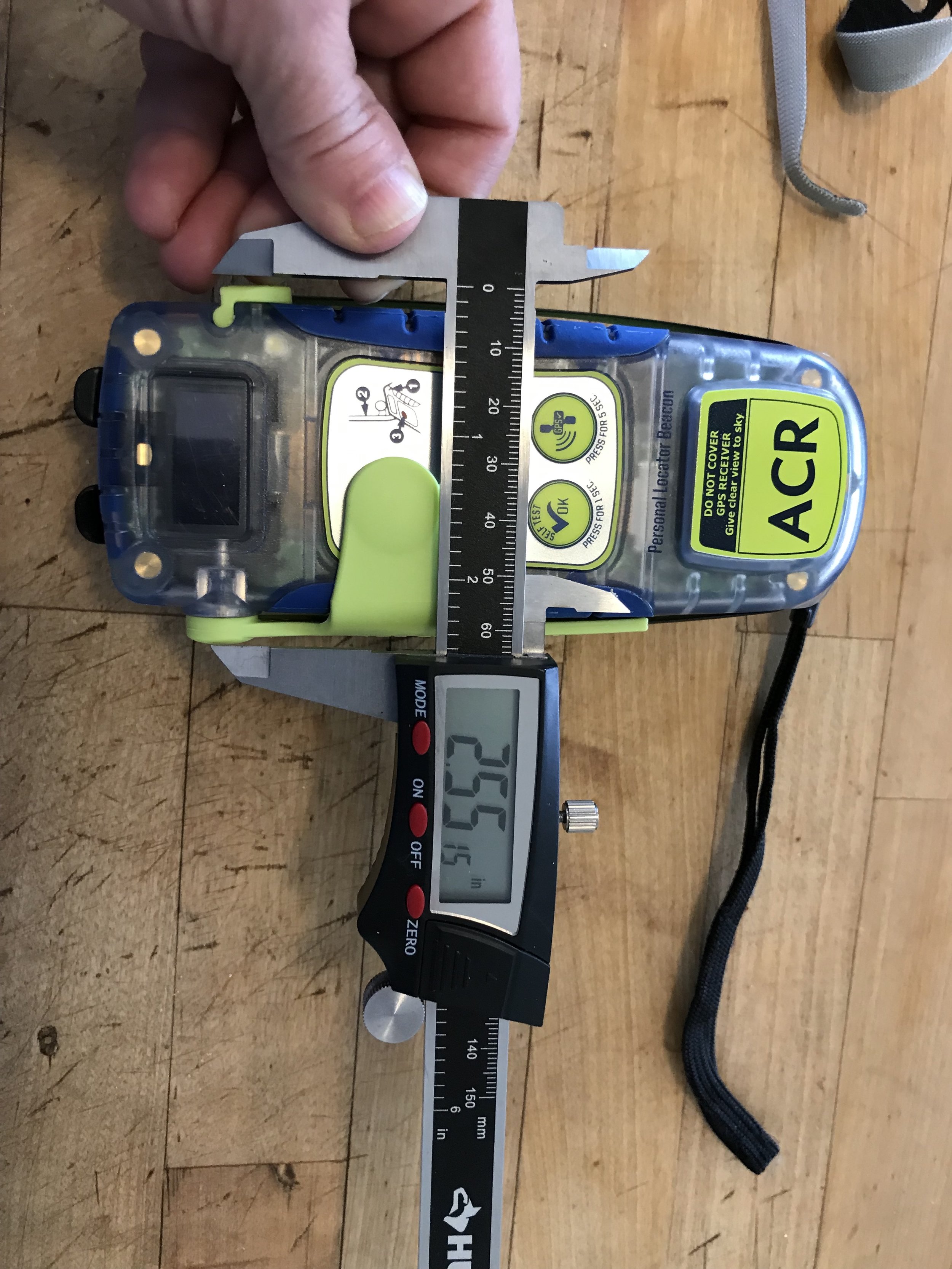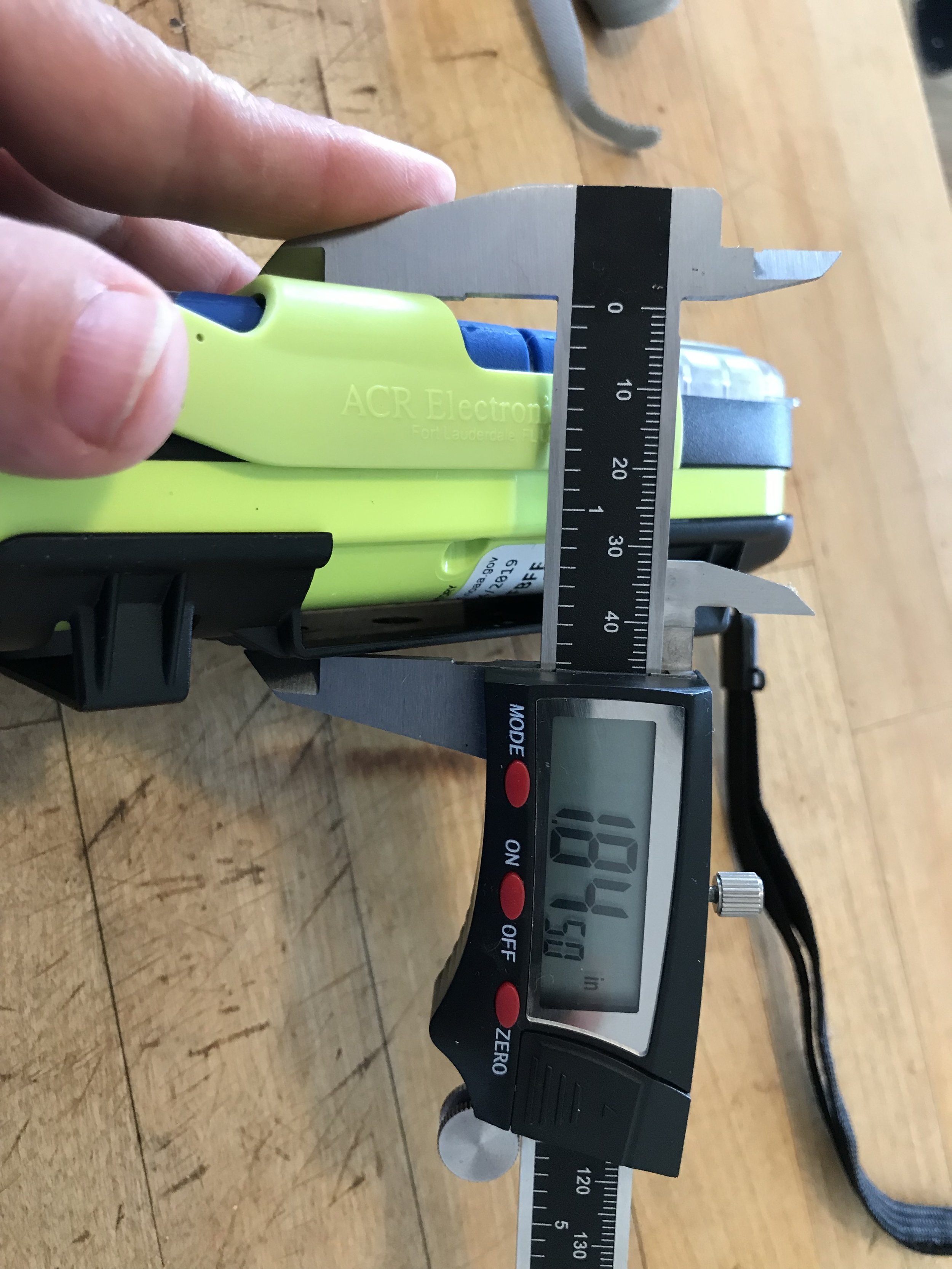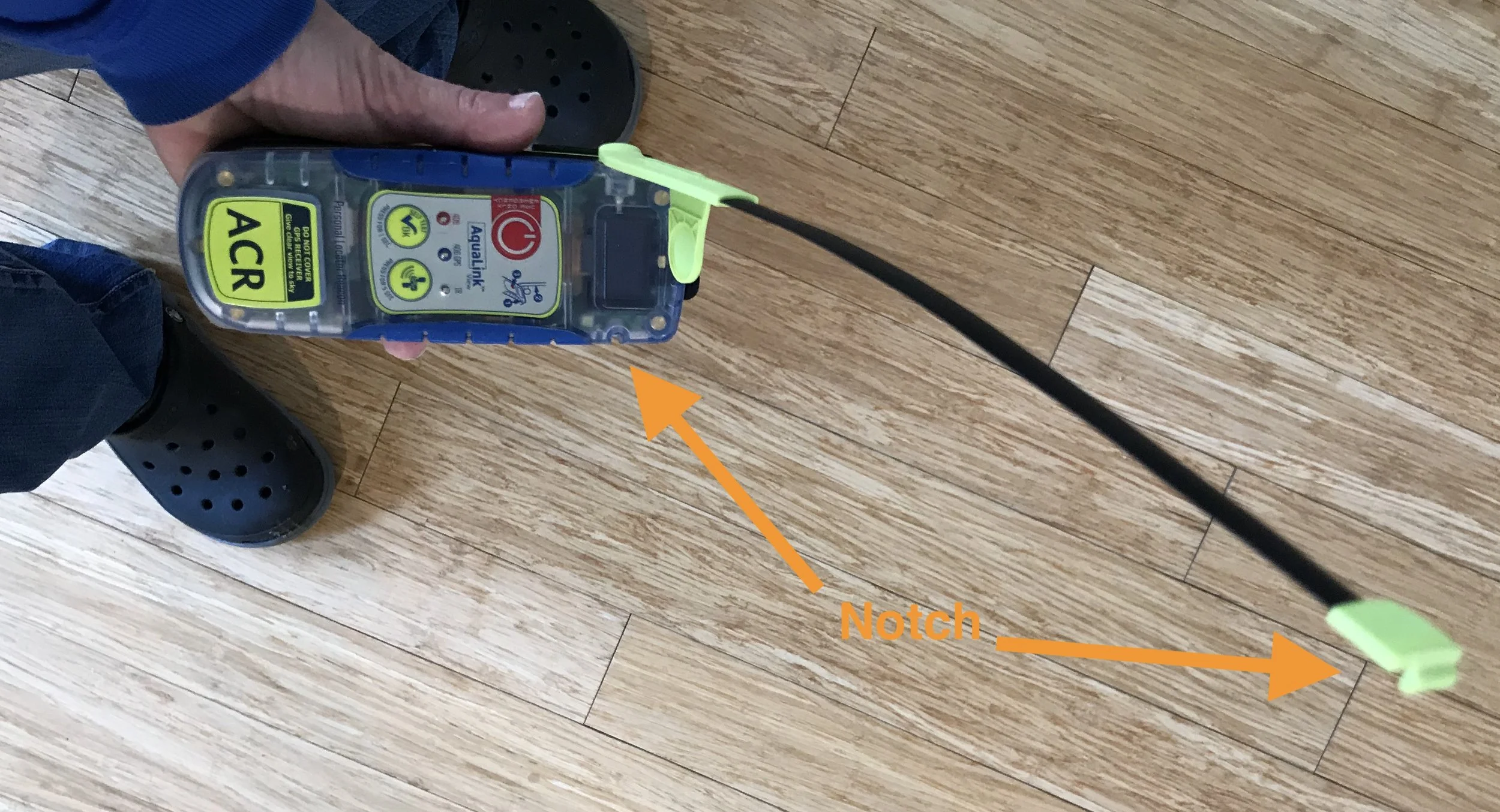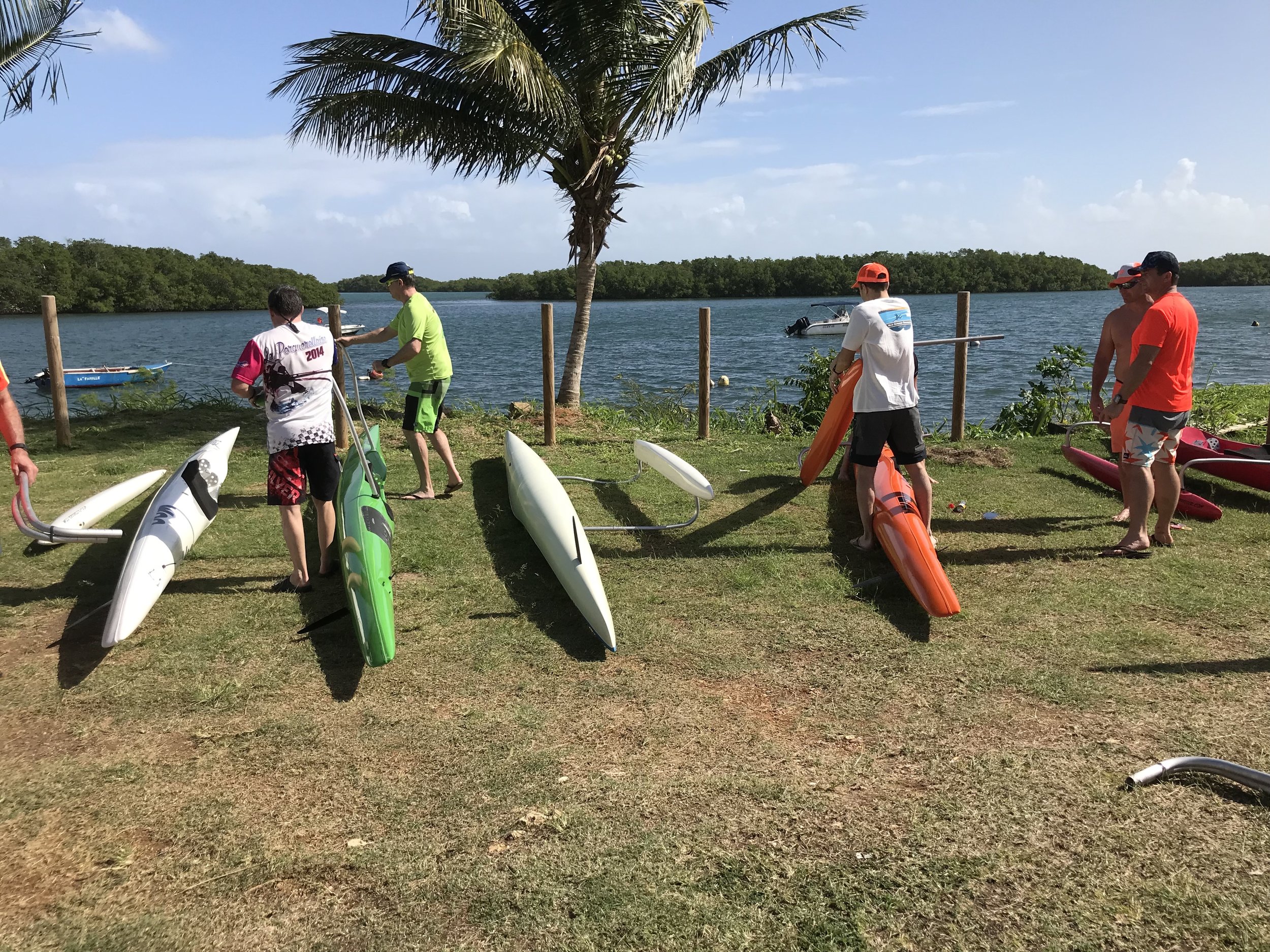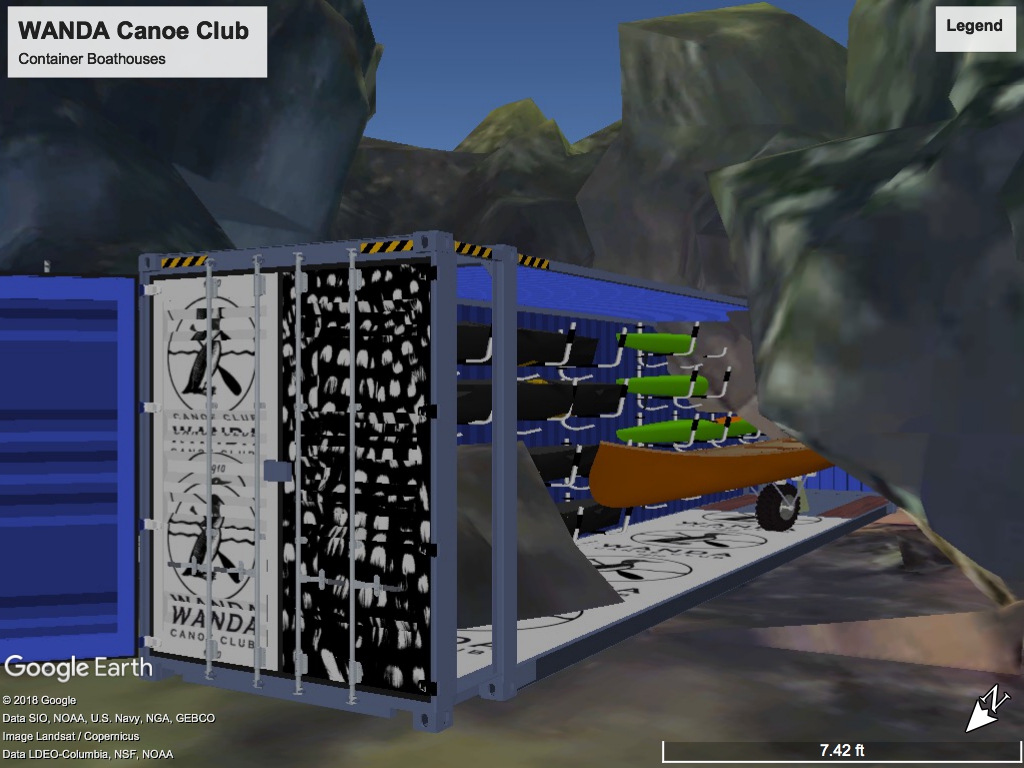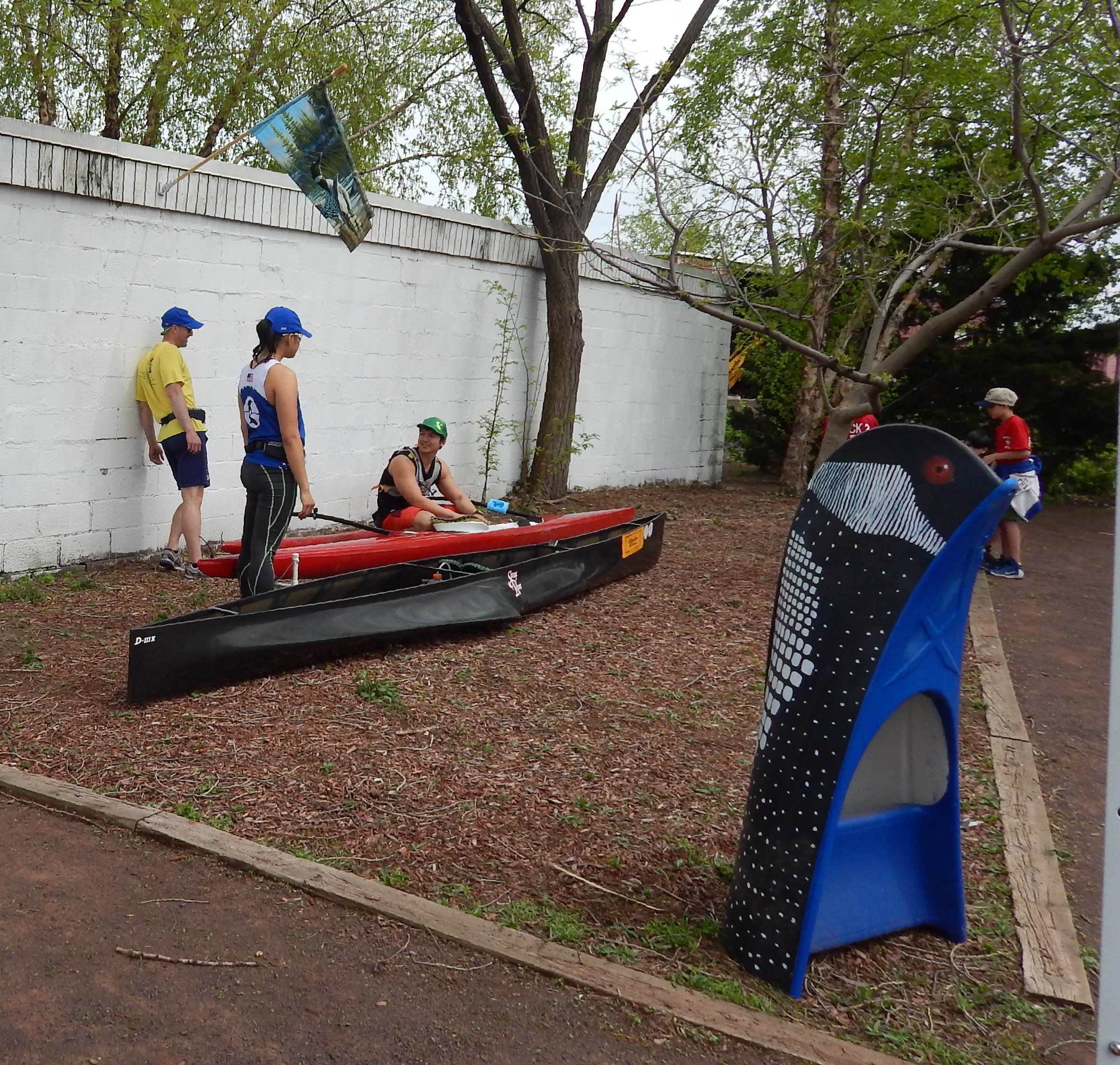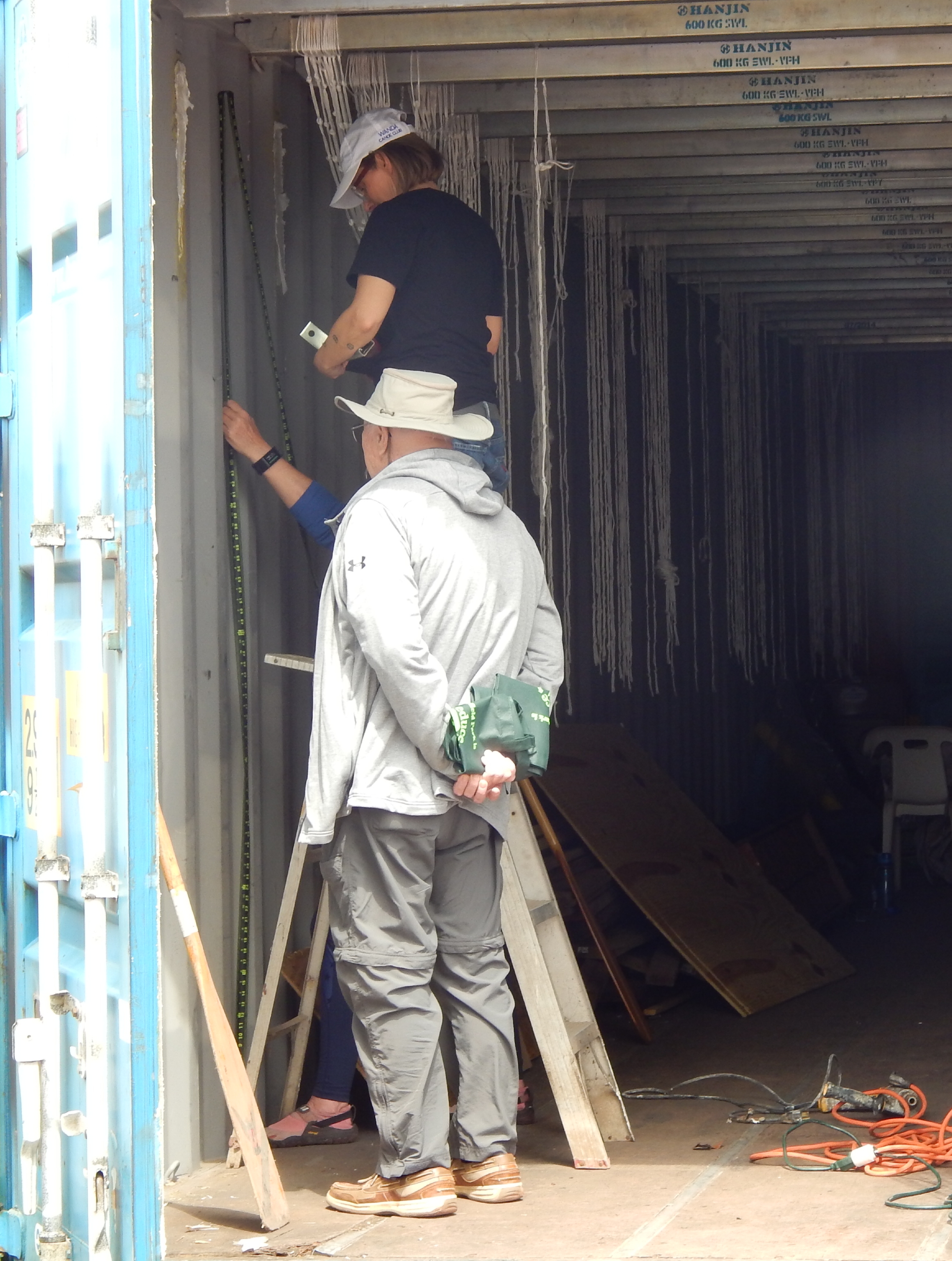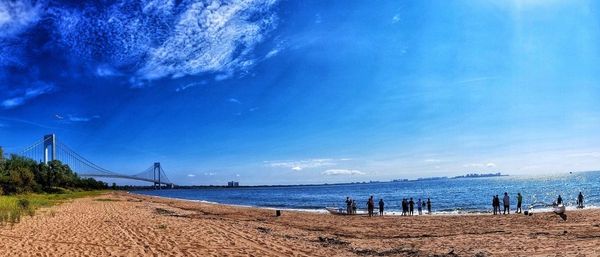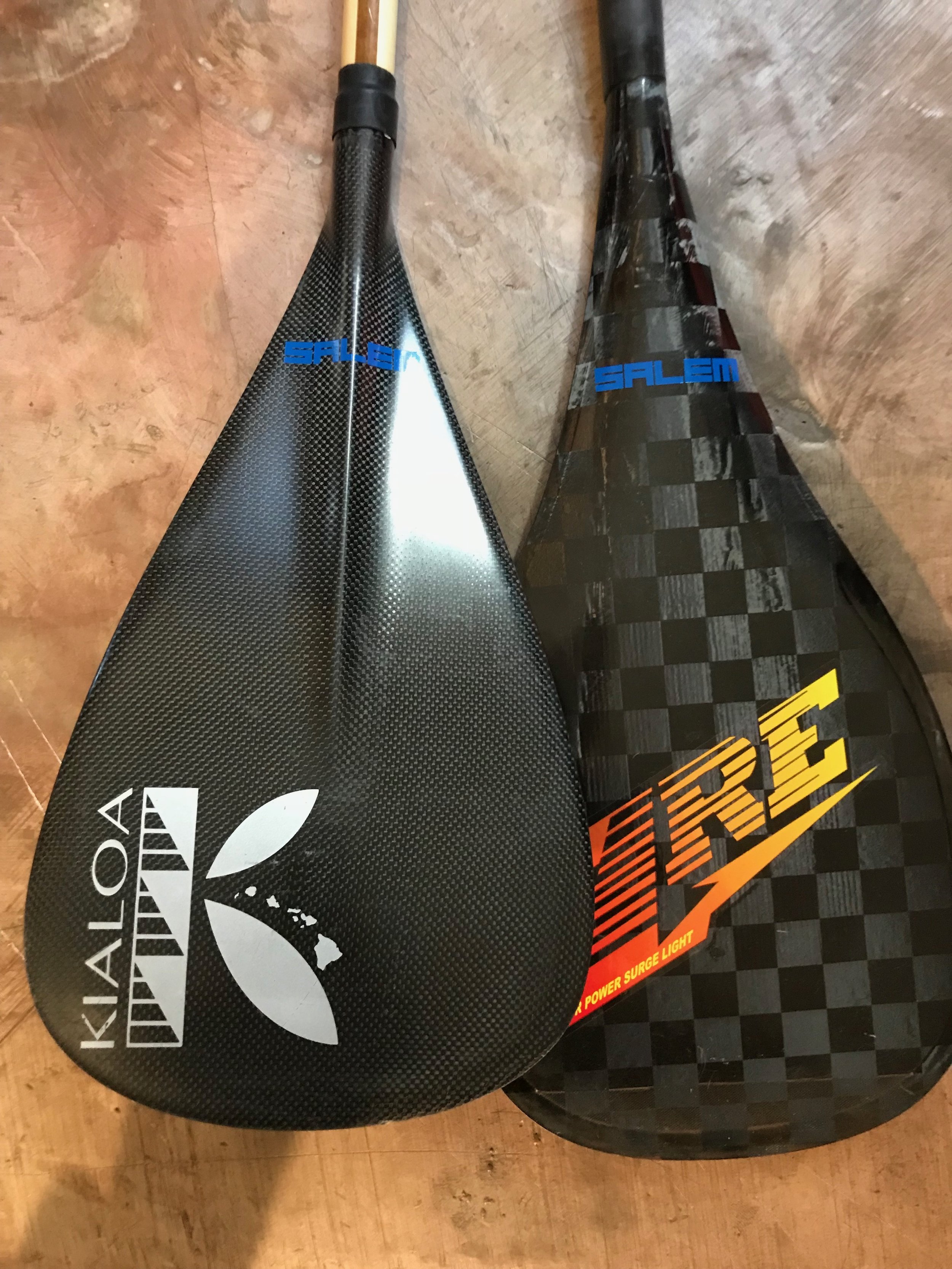Apple Watch Review for Paddlers
I was coming up on logging 200 miles of paddling on an OC1, and with a brand new Kahele replacing my vintage Puakea Kaku, I knew I was not going to improve without the better canoe and hard metrics. It was time for a smartwatch. I had spent the last year using a $12.99 knockoff G-Shock. That could tell me how long I had paddled, and I could get a decent idea of my per Km rate, per mile, what have you. What it also told me is that I could paddle comfortably with a watch. The obvious upgrade was a Garmin, and the stars pointed to the Fenix 5.0, top of the line, etc. What had put me off about the Garmin was that it really isn’t for paddlers. It’s a runners watch. Then a mishap at Woo downwind camp in January 2019 really made me rethink the Garmin. This was in fact a failure of the watch band. Witness this great downwind video, with Adam showing off his style; however there is a subplot. Witness that the video starts with him wearing the Garmin watch, but soon it vanishes, never to be seen again. Adam was able to pinpoint the exact video frames showing the failure of the watch band and the watch dropping into the sea, hardly what you want a GoPro for. Goodbye expensive watch!
So, I put serious time into researching watch bands. Due to the numerous Apple watch bands on the market, this placed the Apple watch onto my radar, which I had never entertained because I don’t know any serious paddlers who use it. More research proved that apps had been developed for the Apple watch that were expressly for paddlers, and when I discovered that the Apple watch 4.0 is virtually a standalone PHONE, I took it seriously. That is, after I did a fair amount of research on sport watch bands and apps. A visit to the Apple store involved some hard questions for the salesperson, who showed me how to put apps on the watch, showed me the Nike sport band - which has a similar quick release button that resulted in the failure of Adam’s Garmin. I was also shown the Walkie-Talkie feature and, most critical, the Phone and SOS features. The salesperson advised me to go to Amazon to look for any number of third party watch bands that would suit my purposes. I bought the Apple watch 7.0 44mm (Nike), and let’s just say I’m thrilled.
UPDATE 2022: I upgraded to the Apple watch 7, GPS/Cellular 45mm. The battery life of the 4.0 was still decent (85%), after very hard daily use and over 1000km a year paddling, but my main interest is in the SOS phone option, so it seemed wise to upgrade. In addition the larger face with an ALWAYS ON option makes a difference, especially on the water where a quick glance at the face is all you have before you get hit with a wave.
I chose the Nike face because I want a bright large screen. You’re stuck with the Nike app (which I don’t use) but you can choose the others. I added Waterspeed, weather and at the bottom a stop watch. Choose whatever face you want. You may want to do this via your iPhone.
SUPcase does not stand for stand up paddling. Anyhow this is what I purchased, a SUPcase watch band for around $23 on Amazon. UPDATE 2022: These cases hold up. I am on my third because they do fade and get dirty. I buy the lighter colors for contrast in the water. I wear it all day long, ocean, yardwork, rough activities - and the Apple watch itself remains pristine. Just wish they had more sport, bright colors!
The Apple watch has excellent water resistance. Please know this is not a review for divers but for people like me, who get wet a lot but do not submerge to any depth unless of course we fall in the waves, where a waterproof band is not required. The Apple watch has high water resistance AND a water lock feature, which you can manually turn on OR your water sport app will turn it on. This feature is built into the two apps I will review, Waterspeed and Paddle Logger. I will go into this water lock feature in a little more detail because I didn’t know about it and thought the app was frozen after I first used it.
Credit goes to iDB for this image and you can read more about how to care for your Apple watch here.
When you swipe up from your home watch face (there are many you can choose from), you get the layout on the left. The water drop icon activates water lock and also makes it so you can’t swipe the screen. When you’re on dry land and you want to deactivate the water lock, turn the digital crown per the directions and some mystery function ejects water. Don’t ask me exactly how this works; suffice it to say my Apple watch spends a lot of time in salt water and everything is good. No need for a waterproof model such as is manufactured for divers for us paddlers. The SUPcase I chose protects the edges and face of the watch as a “bump guard.” Most importantly to me it does not have a little quick release button that could fail, and it has a traditional clasp, so it is easy to take on and off. There are no pins where the band connects to the central section snugging the Apple watch proper. I did add a screen protector film as well. I use a cleaning solution such as I use for my electronics once I get off the water. You have to insert the watch in a sequence and it is next to impossible to push it out when you are wearing it. Many competitor watch bands have some negative reviews for failed pins. This one just doesn’t have them at all.
Waterspeed
My first choice app for paddling
Waterspeed bundles a lot of data into their app. You can choose your water sport and go from there. You are best off going to their site to check out all of the features. (UPDATE 2022: The app is constantly upgraded, so that just when you have everything set on your watch, it goes away and you may have to tweak settings all over again. It is a nuisance to reset the watch to keep the APP face active during use. However, it is still a better app for the price. Go to settings, RETURN TO CLOCK and set it for After 1 Hour. This is the max you can show an app on the watch face, which runs the battery low, so it is not a default.)
I will summarize why this is great for me: as a novice who is transitioning to intermediate paddler I need to know more than just where I paddled, how long and how far. I elected to review my data in kilometers, mostly because my goal is to train for a 50k open ocean race. I now train in the ocean and practice 1 kilometer sprints and various techniques. Later when I review, Waterspeed breaks the data up into 1 kilometer splits. Heart rate data is included as is some basic wind speed data. You can replay the mapping as a video and you can also edit out the pieces that are not relevant. For example if I forget to turn the app off, and it shows my path walking around the beach - that can be removed. I can edit out my time on the water prior to race or sprint start and edit out the end. Etc. I paid for the pro version, which costs about $4 per quarter. You can see some data on your watch, and when you are paddling you can see your actual speed, distance etc. But for analysis, you want to use your iPhone or iPad to see everything on a bigger screen. So, just sync the app’s diary and it will only take a few moments for the data to appear on your other devices.
UPDATE: I’m not a novice paddler anymore. I use the watch for surfski, SUP and SUP surf. In SUP surf I am in the waves a lot, and the watch holds up just fine. I also paddle all season. In the winter I have to wear the watch over my dry suit, which prohibits some of the tracking features, like heart beat.
I don’t think about my Apple watch at all in any conditions. It just works, and especially well in the SUP case.
The scissors are the edit icon. This is a race log. So the slower parts of this log (waiting for the race to start and a slow paddle afterwards), can be edited out and the actual km/hour rate recalculated. Or you can use the slider button and scroll through the visual data, zoom in and even play it back. Lots of data!
This is an overview. Here you see the play button, which allows you to watch the visual log. Here you also see the export button. Not only can you export images you can export DATA as a CSV file. This is really nitty gritty, and I have not needed to use this data just yet. But it’s there.
This is the editing screen with its options.
Let’s take a look at the other app on the Apple Watch market for paddlers, Paddle Logger. A novice friend of mine uses this, and this fits her needs. She basically just wants to see where she has paddled, how long and how far. I tried this then paid to “unlock” the pro features, which turned out not to include and heart data, no splits, etc. This costs about $3 or $4 per month, and when I really could not find improved data, I emailed the developers, who told me it did not have what I was looking for, so I cancelled the subscription.
Let’s get down to what is really awesome about the Apple Watch 4.0: it really is a phone. Granted you must already have an iPhone and using this as a phone will cost you another $10 per month on your data plan. BUT you do not need to carry both at the same time. I have an iPhone 7 plus which is basically a phablet and way too big to carry in my PFD along with my radio and my emergency beacon. Since I always paddle reasonably close to shore in the US, there’s a good chance I can make a call from out on the water if need be. If friends also have Apple watches, we can use the built in Walkie Talkie feature. Then it comes down to the fact that your contacts, music, etc. are all on it. You can ask Siri to start Waterspeed, order a pizza, talk to Mom, text your boss you’re “sick” because there is an awesome swell - whatever you want and expect from an Apple product. I am beyond sold on the Apple watch. The paddling apps will only get better. In closing I’m going to plug the app that I don’t use for a feature that Waterspeed SHOULD have. This is called PIT - paddler in trouble.
Don’t paddle if you can’t make it back to dry land. If you get into trouble, have a plan. PIT might be one of those plans that works for you.
PIT is a function of this app (yet to be released) which allows you to set a timer for the duration of your expected paddle. If you don’t shut it off before the timer counts down, it will ask you if you’re ok and if it gets no response it will text whomever you have set it up to dial. There are other guardian type apps out their that do this as well. This is a GREAT idea. But greater even still is knowing the weather, knowing where you are paddling, paddling with others and ALWAYS inspecting your gear for possible failure (leg leash, my friends) before you head out. As much as I love this feature I will text a buddy I’m going to be out for an hour than end up paddling for three. So, I’m going to do my final wrap up on this by THANKING PADDLE LOGGER for showing me the workaround. This is the built-in SOS function on the Apple watch. So, if you have an app running and your phone is in water lock mode, how do you make an emergency call? You press the lower button and HOLD IT down. An emergency call will be placed. The short video shows how the SOS feature overrides the Waterspeed app (or Paddle Logger or whatever). The long video is me going over my watch. It’s a little long and tedious, but if you’re going to drop $500, worth the time. I did not find any videos on the Apple Watch for paddlers when I looked, and so I write this entry not to sell watches but to make paddling SAFER and spread the good vibes. This watch not only makes me safer, but I have to say I’m already a minute faster per Km from the data feedback. So there you go. Stay safe people. The water is a blast, but the return to the beach is always our goal so that we can do it all over again.
XOSS G/G+ Speedometer and Strava for Paddlers: an affordable speed coach
A $56 USD speed coach for paddling.
The Xoss G/G+ is an affordable solution for live technical feedback during training. Other options marketed to paddlers tend to cost around $400 and are marketed independently for surfski, SUP and outrigger - meaning if you paddle all three you would have to spend around $1200 for standalone units. I spent $37 USD on the Xoss G/G+ and $19 USD for a standalone cadence sensor, which I can use with all of my vessels.
Connected to the foot brace on my Nelo 520.
The XOSS G/G+ is waterproof rated to IPX7, meaning it can withstand heavy water droplets and be submerged to one meter for 30 minutes. I still put it inside a $10 USD Dripac because the rubber plug that covers the USB charger connection could fail. Cheap insurance. (I had this type of USB plug fail on a Standard Horizon marine radio).
The battery life is 25 days with use at 1 hour a day. In other words, take it out for a long paddle and it will last all day.
HOW TO SET IT UP FOR PADDLING:
1: Charge the included lithium battery with the USB cord provided.
2: Turn it on with the right button. Wait for the initial screen to come up showing 00:00 in the data fields.
3: Press the left button once. This initiates the GPS, which scans for a satellite signal. You should be under a clear sky. If you try it inside or under a covering, you might not pick up the signal. While it searches it will flash a little GPS icon on the upper left. It will beep when it locks in and the GPS signal will become steady.
4: Go paddling.
Yes, that’s it. That is all there is to using it as a real time speedometer. The speedometer data is the largest data and pretty easy to read. I prefer km for speed and distance, which is the default setting. If you need to change defaults do this before you go out for a paddle. You can get the pdf manual here: Xoss G/G+ manual.
I was able to adjust my surfski stroke for immediate improvements and gain .5km in speed overall very quickly. I’m fairly new to surfski, which is tremendously technical, so figuring out how to position the wing blade and press down in the water as I rotate to gain speed was very satisfying. It was also very satisfying to have only spent $37 USD to get a speedometer. What I did not realize is that Xoss also has its own app which connects to Strava (and other software). If you want to review your data on your smartphone follow these steps:
1: Download the Xoss app. (You can use the QR code that comes with the instructions to connect to it).
2: Download the Strava app.
3: You will need to have a Strava account and a Xoss account confirmed through an email. Once confirmed you are ready to connect the Xoss G/G+ to your phone via Bluetooth.
CONNECTING THE XOSS to your phone and Strava via Bluetooth.
1: Open the Xoss app. Click on your device. (Bluetooth must be on). It will bring up your device. Click on that, and it will load a page where it syncs to the Xoss. Here you also have to connect to Strava. Be patient. It took me a few tries. VERY IMPORTANT: You can’t sync data if the Xoss is still recording. To stop recording LONG PRESS the left button once.
2: It will recognize the data but there is a little button you have to click for the full sync to Strava.
3: Once synced you can click the Workouts icon and it will open the Strava data inside the Xoss app. Here you can review data and also watch a video of your paddle.
After poking around on the internet and looking at the instructions I soon realized there are add-on sensors. The Xoss G/G+ unit is a speed sensor but you can add a cadence sensor to it. This is what you see in the image above. It can be confusing because they are also sold in 2 packs as speed and cadence sensors. These are standalone sensors that can be synced to your phone, if you were just using your phone as the data screen. They are also identical sensors and each sensor can be used for speed or for cadence based on a setting. I only wanted cadence because the Xoss G/G+ is my speed sensor and screen.
If you want a cadence sensor buy a single unit, remove the battery and reinstall. If a blue light comes on it has been switched to cadence sensor. Yes, that is correct, merely by taking out the battery then putting it back in, you change the function of the sensor. You can use the Bluetooth connect screen in Xoss to find the sensor, and if you swing your arm around in a circle it will start registering the “cadence.”
The cadence sensor instructions show you how to mount it on a bicycle pedal. It put mine into another Dripac bag and just clipped it to the center of my Braca paddle. For outrigger I would tape it to the base of the handle. For SUP tape it below your lower hand on the shaft.
Follow the Xoss directions for pairing your sensor to the Xoss G/G+, and in less than a minute you will be able to see your cadence data while you paddle also. The display for this data is small, so I just review it after I paddle on my iPhone.
You may not care why the sensor works just as well for paddling as it does cycling, but I will explain anyway: the same sensor that knows whether your phone is “up” or “sideways” for changing the display is called an accelerometer. These are used for XYZ positioning. The computer program then uses this data to perform the next step. In the case of the cadence sensor it basically takes a rotation and calls it an RPM. As long as the sensor can pick up your paddle rotation, it will log the motion.
Read RPM as stroke per minute. This is surfski stroke data. This will work for any paddling sport.
Ocean conditions change all of the time, so stroke rate varies considerably. Here I tried a high rate upwind and a low rate downwind. I expect to vary my cadence during race conditions and will use the speedomter as my guide during the race.
Have fun, stay safe, and see you on the water!
ARDUINO ADDENDUM: I make small electronics and have all of the parts I need for around $25 USD to make a speed coach type of computer using Arduino programming language. The biggest issue is getting a good readable screen in a watertight housing. Apps are also available for iPhone and Android that accomplish the same thing, but the phone battery life struggles during a long race, and the phone overheats in a waterproof case. If you want to make your own Arduino speed coach, you can link to that kind of project here: Arduino.
Black Project Hydro FlowX: Review
IT CAME FROM MAUI!
The Black Project Hydro FlowX sounds like a name for rocket fuel. It looks like it fell to the ocean from a rocket launch and also looks like a paddle within a paddle. I had purchased my NSP Sonic SUP last summer as an alternate to spending money on travel during the pandemic, but was only able to purchase a very cheap and very heavy adjustable paddle from a sporting good chain to get me started. I was also spending more time in my Nelo Surfski and my go to Puakea Kahele outrigger canoe, and the SUP was getting neglected. So, I decided to sign up for a clinic with April Zilg at the Cayuga Lake Cup Race in the finger lakes region of upstate New York in August. Nothing like knowing you will spend a couple of hours with a world pro to get a paddler salivating for personal improvement on the water. But was I really going to go with a paddle that weighed as much as my SUP? (At least that’s how it felt to my shoulders).
I downwind paddle as much as possible. I picked up the brace stroke from Oscar Chalupsky for surfski in 2018 and immediately applied it to outrigger paddling. Spending more time on the surfski this year, the brace came automatically, and when I got back on the SUP this summer, I found myself throwing the paddle out to brace in the surf for stability. My NSP Sonic is a downwind board, and usually I paddle against the wind or surf then turn around to zoom back to shore. Not that I have much of an idea what I’m doing, but my local waters do get considerable medium sized surf and breakers, which are fairly optimal for a novice surfer such as myself. This is a long preamble to how I discovered Black Project paddles in the first place.
Yes, I’d followed Quickblade’s SUP series and also Hippostick’s, but these are made by crossover athletes who also make outrigger paddles. I own a QuickBlade V111 that I absolutely love, especially for downwind (and upwind). I was also familiar with ZRE’s SUP, and I also own a 10oz ZRE outrigger paddle. But when I searched for SUP surf paddle, I was coming up empty. With all price points at $500 USD, which of these carbon beauties was I going to buy? After a series of searches I came upon some minimalist SUP thread where someone suggested Black Project for surf. Since Black Project does not make paddles for outrigger, the brand was not on my radar. Well, it is now. There isn’t any spectacular footage in the video, it’s just my first time out with it. What a difference. If your eyes are glazing here, and you just want to know if the Hydro FlowX shaved a minute off my paddle time, then the answer is yes. Sure. This paddle feels like it weighs nothing, the side to side transfer is a weightless breeze, the power is incredible, and the steering agility was surprising. Love it.
The rest of this article will get rather technical and speculative. Read on if you dare…
A few years ago I decided to 3D print a paddle blade. Or 1190 days ago according to the internet record on SimScale, where I uploaded a model of my blade design and attempted to simulate what happens to water flow around the paddle blade. I’m a better technician than I am a paddler, and while overthinking water flow can certainly distract from the beauty of paddling in my local ocean, we wouldn’t have rockets if people didn’t overthink how to technically overcome gravity. I had not set out 1190 days ago to invent a rocket paddle. I was actually curious about how much of a spoon shape could be incorporated into a paddle. I was thinking about webbed feet and wondering if a webbed paddle might be a logical solution. I also think the days of carbon lay-up are in the sunset and 3D prototyping and printing on a larger scale will be here faster than you can say “internet.” And I did indeed 3D print my paddle, which was called, 1190 days ago, the Brooklyn Paddle, since I lived in Brooklyn and paddled on the Hudson River and in the New York Harbor.
I spent countless hours learning to model the complex inner and outer curves of a paddle blade (using Fusion360 if you’re interested). And this is where the technical design of a paddle really gets into, let’s call it, flow. As a downwind paddler, I spend a lot of time paddling upwind also, so I need a blade that can really pull the boat (or SUP or surfski) past the blade. The blade must also be very quick in and out of the water on the downwind attacks. (Ducks are no longer my model here because as much as they might upwind, I’ve yet to see one actively surfing). Yet it was the ducky V-indentation on the QuickBlade V111 that first got me interested in that paddle, along with its flatter bottom.
Pictured above are the conditions I love, and the ones I aim to graduate to with my SUP. The indentation in the Hydro FlowX (or DPS “deep power scoop” as Black Project calls it), immediately reminded me of the QB V111 indentation as well as my early attempts to make a paddle with a flatter bottom edge and deeper spoon. But what is really amazing is how small the blade is. How in the world can I be so far from the blade and get so much power out of it? How in the world did I suddenly get a steering paddle in such a small package? Enter the paddling and engineering duo behind Black Project of Chris Freeman and Tom Hammerton. As soon as I landed on their website and was able to scroll through line after line of technical data about the different paddles, I was hooked. I went through their step-by-step how to choose a SUP paddle guide and really felt I had the information I needed for sizing. However, at this point, since SUP is what I spend the least of my paddle time on, I thought I would go with the Lava, an all around paddle with a slightly lower price point. However, the clinic with April Zilg was pending, and I knew I had the option either to relegate SUP to hobby or to take it to where I take the rest of my paddling: the surf!
“Paddle=Board. Both are equal.”
Really, why have a fancy downwind SUP and not go all in with the paddle? The paddle is half the sport isn’t it? I read every single review I could find of the Hydro FlowX (which were maybe two total) and reread them. The more I scrolled through the data on the Black Project website, the more I realized this was a truly engineered project. These were geeks like me, in love with the ocean and willing to apply math and physics to it. Below is an image I got trying to model flow around my 3D paddle concept before I printed it.
You can basically see how the paddle slices into the water and some volume flows up past the blade and over the top. The hole is where the handle connects. If you add the ridge and peak onto the top of the handle, like Black Project did with the Hydro FlowX, that is going to change. The water is both going to flow up and also be held like ice cream in the scoop. Does any of this, stroke by stroke, need to be visualized to make us faster paddlers? Maybe. Like nature we need to be master adapters. If, when we put the blade in the water, our body is more comfortable, we have more power and more steering agility, then the technical analysis pays off.
Black Project hails the Hydro FlowX as the first 3D paddle. Of course all paddles are 3D, but this one has volume, which means the water is getting displaced while the blade slices in, and the water is flowing into the scoop in that instant of forward thrust. And this is great food for thought, but as I ran my credit card through for the Hydro FlowX, I thought it best to send a query to Black Project. After all, what do I know about SUP paddles? I was also anxious that the paddle get to me on time for the clinic with April Zilg. I got a call from Maui not long afterwards, and the next day Chris Freeman and I spoke. He suggested I take a look at his article Smaller, Softer, Shorter, which you can read by clicking on that link. I was already aware that downwinders could benefit from a smaller paddle, and Woo had a small paddle for us to try at downwind camp in 2020, just before everything got shut down due to the pandemic. I think we may have tried this one, which they sell as an emergency paddle. Let’s focus now on smaller. How small could we get?
SMALLER
So how is it that I am so far from the blade on a SUP, yet have so much power with such a small blade? Why are SUP blades smaller? Possibly there remains the mentality that bigger is better. I can definitely state that my coaches are all in principle agreement (that is the ones like Guy Ringrave and, as I’d find out, April Zilg) that a long stroke is not necessary. And yet you hear the chant all the time in outrigger paddling: long and strong! I’ve literally had a SUP paddler call out to me I should try a bigger blade. As I paddle more and more downwind, blessed by conditions from tropical Atlantic Ocean storms, my QuickBlade V111 starts to feel sluggish on the catch. The waves are moving so fast, I can literally feel the canoe slowing down when the blade enters the water. Subsequently I don’t bother trying to bury the blade or even stroke from my toes to my hips. It’s more of a knee to thigh explosion to position the bow at the bottom of the wave trough. This same explosion comes naturally with the Hydro FlowX. For surfski, with its two-blade wing-spoon, a couple of quick powerful grabs are required (and I’ve a long way to go at that!). But the surfski blades are also small. Why is the outrigger blade so big by comparison? All I can say is I wish I had another $500 to gamble and to have Black Project make me a super short, outrigger length version of the Hydro FlowX so I could find out.
Be safe, and see you on the water!
Downwind Paddling: On Becoming a Downwind Paddler
It is March 2021, and I have spent more seat time in my Puakea Kahale than ever, in large part due to the need for social distancing. My local club started going out in our 6-man canoes late last summer, and several of us had been going out together in the smaller 1 and 2 seaters, but for a number of reasons I am still adhering to strict social distancing guidelines and not participating in any group sport activities or races. And while I miss the camaraderie of the big boats, the wind and waves and I have gotten quite close during the pandemic. If you want to get good at downwind, you have to paddle downwind. Solo. As much as possible.
In January 2020 I attended the Woo downwnd camp for the third year in a row. My skills had improved greatly, and I paddled the Woo Outrigger, French-made Feline as much as possible, as it was similar to the Kahele in length and volume. I did not huli once, no matter how tempted the Feline was to flip me, and I found some considerable speed and reasonable consistency on our daily runs.
My French coach Alain remarked that both my paddling and my French language had improved. There is no better way to stroke a paddler’s ego than to notice something they suspect: improvement. I recognized, however, that I would do much better on a Kahale, principally because it is lighter and has the improved steering with spring return rudder.
At the airport in Pointe-de-pietre in February 2020, as paddle camp wound down and we all returned to our home countries via this small international airport, I saw my first notices about travel restrictions into the USA due to coronavirus. A flight headed toward Miami earlier in the day returned a passenger who would not be allowed to depart there. Passengers who had been to inland China had to get rerouted onto New York bound planes, like mine. By the end of February I felt like I had a virus, though the news was not very clear as yet, and while I noticed the strange symptoms of the virus, I thought little of it until later. Within a few weeks restrictions increased, and the local club’s future went into limbo. I went out into the Atlantic Ocean by myself and started getting to know it quite well. For the duration of 2020 until now, my local waters are my university.
It had been a couple of years since I had started reading and then rereading WAVES by Fredric Raichlen, and while I got the basics I had not ever really seen my local waters as a system I could study. Having always paddled along with the bigger boats in the club, where surfing was seldom our focus, I tagged along regardless of wind conditions. But on my own I began to study the wind direction and tides. Soon I recognized the telltale signs of downwind runs, the curling horsehead waves running in the same direction. In my local waters sometimes these wave train patterns are only a couple of hundred feet wide or even less. Within these conveyor belt systems I discovered I could do 1 kilometer runs over and over again.
There are about seven small breakers in this image. A dark line behind me and closer to the horizon is another breaker. The further out I go, the bigger the swell. Closer in, the waves bunch up on the shallow sand.
I live on Long Island Sound, where on any given day, as long as I have 10 knots or better wind, I can downwind north, south or west. 16 knots is optimal for solo downwind. But approaching 20 knots, solo paddling is ill-advised. East directed waves will push me out to open water, so despite the temptation, I never downwind away from the shore even if the windspeed is below 15 knots. One of the key insights to downwind is that the waves actually don’t need to be big. As long as wave trains are moving in generally the same direction, even small bumps are surfable. In the video below, I am teaching a friend how to catch the swell rolling to the north. I can see the low bumps ahead, and I know more are coming behind me. So I keep a steady pace, and when I feel the stern lifting behind me, I pick up my stroke to match the speed of the wave. When they are the same, which is something you basically can both see and feel, you can let the momentum of the wave puch you. In this way, downwind paddling technique is more of a high intensity sport. You will cycle through speeds with intermittent bursts of power. This might look like flat water to you, but it is not. The swell bumps have a direction and a speed.
In the next video, from 2019, I have stronger swell, which a decent app like Windy will give you in Kj or kilojoules. At this stage in my paddling I knew the basics of what to look for and my timing was improving. Later in 2020, however, I found I had the ability to really hammer the paddle blade in and pull myself onto the face of a wave just so, to drop ono the incline like a surfer on a surfboard. The only way to get the feel for this is to go out in any kind of swell, even if it seems tiny, and try to ride it.
To close out this brief blog on downwind, the power is in the wave, the ability to catch that power takes immersion. Study your local waters for the telltale signs of downwind conditions, and even if they are small, go after them. It will make catching waves of all sizes easier. And once you really get to know your local conditions, you will know what to look for in other conditions, as well as what the bathymetry suggests by the waves above it. Basically, the top waves are travelling in circles, like a conveyor belt rollers, with their patterns often suggestive of what the sea floor looks like beneath them, as they roll against the sea floor and bunch up. These patterns will change with tidal height and flow. In this last video, the water is brownish from the silt churned up by a storm. The swell was quite strong, and I timed it just right to ride a single wave for about 30 seconds.
So, how do you know you’re going from beginner to intermediate downwind paddler? Maybe when you go from not even knowing what downwind is, to having your friends remark they are amazed at your ability to catch a 6” (15 cm) tall wave. Mostly it comes from the first person point of view, where you are running with the wave trains, feeling it - and seeing your average speeds creep up over time. A smartwatch helps with that. I use the Apple watch. Stay safe, and see you on the water!
Paddle Board Leashes (and How to Stand Up)
Maiden voyages of NSP Sonic paddle board and VESL prone board with MetaLeash.
Paddle board leashes are essentially the same leash as an outrigger or surfski leash. This means the inexpensive leashes (and even some of the expensive leashes) marketed for boards have most of the same problems as the cheaper leashes on the market: breakage, slippage, UV rot, heaviness, etc. The stand up paddle board (SUP) paddler has some unique issues, mostly having to do with how you fall. When I bought my NSP 24” Sonic surf paddle board, the seller (Vermont Surf and Ski) had hoped to take me out to a river and give me a few lessons near Brattleboro, Vermont, where I had to drive to pick it up. My first thoughts, as a safety geek, were: how deep is the water, how rocky, how fast is the current… But he was limited on his time as NSP boards were in hot demand that day. He bought four MetaLeashes and told me if I fall off my board, to basically dive sideways so I don’t come down on it and crush the carbon hull with the paddle. Obviously, other crushable things are bones… Luckily when I took the board out on my maiden voyage, I ran into this fellow, below, who got me standing up in five minutes.
Most people would not buy a race board before getting cozy on a wider, shorter board first. As an experienced ocean outrigger paddler, my comfort level was high enough to bypass entry level boards. The price was right on this used board, which only had a couple of dings I had to repair. Compared to my outrigger canoe, the NSP Sonic looks really wide, but I am in a sitting position with a low center of gravity in the canoe. Shifting that weight upwards was going to be a challenge. This is how we met that challenge: my stand up coach stood at the back of the board and basically used his hands to steady me. He told me to get into a crouched position and start paddling. So, he walked behind me, and after a minute he told me to come up on one foot and (KEY PART HERE) WHILE TAKING A STROKE come up on the other foot into a standing position. Just like that, I was standing. Let’s cover this again: crouch on your knees, come up on one foot, stick blade in water, stroke, come up to standing position with the other foot.
Aha! A brace stroke! What is a brace stroke you ask? There are variations on it, but basically when you see a paddle board surfer leaning on a wave, on the paddle, they are bracing the paddle. When you see someone flying the ama on an outrigger, they are bracing the paddle. And I am lucky that Oscar Chalupsky taught me the brace stroke for surfski, which is the most important one: the one that keeps you from rolling over. In this case, standing up on a paddle board, the board is more stable because you have the paddle blade planted in the water, momentarily “locking” you into a stable position just like a rudder does, while you mess with gravity.
The fellow continued to hold the rear of the board while I stood and paddled (my legs shaking like mad), and I really have no idea when he let go. So, try this with a friend or family member, and make sure they don’t tell you when you’re on your own. The psychology of BELIEVING someone was stabilizing me, even if they were not, meant my brain could not tell the difference between him being there and when he let go. In fact he made it a point to let me know he would not tell me when he was not holding the board. So, I got my first “downwind” paddle on the Sonic my first day out. And in all subsequent paddles, I did not fall off.
Back to leashes. What happens when I do fall? It is more dramatic than a fall off an outrigger or surfki, where you mostly just roll into the water. Your bouyancy is such that you usually don’t go under. Not a lot of countering forces here. But a plunge? You really don’t want to smack the board, with hands, legs, head… And when you do leap sideways, you will submerge further, which means there will be more stress on the leash.
The first thing I noticed while on my knees on the paddle board, was the cuff of my leash. You have to position the cuff so the attachment to the leash is on the back of the leg, otherwise you will squat on the hardware. Issue number one solved, just position the hardware to the back of your leg. But there are other solutions. I have seen a lot of social media images of stand up paddle board paddlers preferring to connect the leash at the waist. While I do make a belt, on my first day out I just connected my leg cuff to my PFD, similar to what I’ve seen others do. I have been selling more and more of the belts lately, so it is worth considering what is comfortable for you. Link to MetaLeash shop: www.metaleash.com.
A note about prone paddling, foil, surf: the MetaLeash also works well for prone, or for any other board activity like foil. A surf leash is in development with a different set of fall parameters, because falling off a surfboard involves very complex forces, similar to paddle board surfing, with a lot of fancy footwork, and surfers prefer straight leashes. Stay tuned or hit me up with suggestions, comments, feedback, concerns, customizations, you name it, I will leash it for you. metaleash@gmail.com
And now for a video of some truly amatuer standup paddle board surfing and some speedy prone paddling. Here we ended up sharing a leash, another upside of a quick release, which is critical for getting out of trouble, possibly critical for a race start or critical if you are sharing! Have fun and stay safe. It is February 28, 2021, 39 degrees F in my local Atlantic Ocean, and that is paddling weather to me. See you on the water!
LIGHTER: at 4.5 ounces weighs half of other leashes, floats
SMALLER: 50% smaller than other leashes but still extends just as long
STRONGER: heavy duty webbing, stitching and YKK buckle system, 1600lb jacketed Samson Dyneema retractable leash, stainless steel clasp system (no hidden mystery hardware or plasticware like other leashes)
SAFER: easy to inspect, high contrast (red, orange, hot pink, lime, yellow or black cuff), red, yellow, orange or pink leash, dual quick release/connect for either race start or getting out of tricky situations
SIZING FOR OUTRIGGER, SUP, SURFSKI, FOIL, PRONE: Retractable leash comes in 9’ or 6’ length.
SIZING FOR FIT ABOVE CALF: Leash cuff is to be worn above the calf or connected to waist strap.
Straight Leash 6’ with Shock Coil and Quick Release (for surf, SUP, foil, your choice!) Comes with yellow or orange rail saver.
Dry Suits: Top Picks for Winter Paddling Gear, a review of Kokatat, NRS and Vaikobi
The ocean as winter wonderland.
I have been researching dry suits for the past two years. Each winter I have opted to spend money on travelling to the tropics instead, usually to downwind camp. This winter, as I stay at home due to the corona virus, I decided it was time to take the polar bear plunge and invest in gear good enough to carry me through a long, socially distant winter, in my local ocean. I do not make the decision lightly, as paddling in cold water drastically increases risk in our sport.
Every time I thought I was heading toward a bona fide review of winter paddling gear, I ended up on one of those websites that is really a shopping channel. After reading every seemingly real paddler’s review on storefront websites and watching the few videos out there, I really had my heart set on a Stohlquist with a built in jacket. Alas, there wasn’t one in my size available anywhere. Inventory is also scarce in this winter of 2020, and there seem to be a lot of newer brands out there I am not familiar with. As much as I looked and looked, I also was not able to find a high-visibility, preferably orange or partially orange suit in my size. Ultimately I defaulted to a color that really is not a good idea in winter water gear - blue - because it was one of the only ones out there in my size and made by the brand I finally decided was my top choice, even beyond Stohlquist. And though I did not prefer blue, the body of the suit is light colored, which is a lot better than black. But it is still sandy colored, so it would be impossible for a rescuer to pick you out of the waves or off the shore in bad conditions.
Kokatat.
UPDATE: Winter of 2022 approaches, which will be winter three in the dry suit. Not only has it held up with frequent winter use (December-April), I also took up SUP surf last winter. This means I submerge every time I go out, as a wipe out in surf is generally guaranteed. The great upshot of the dry suit investment is that the ocean sports do not come to a seasonal end. My fitness level remains high all year round.
I finally rejected the idea of a drysuit with built in jacket, because I can always add layers. I knew that for the freedom to move fully, to rotate through all of my paddling motions, less was going to be more. Stohlquist does not offer a lifetime warranty and Kokatat does. Kokatat also has nice videos on how to maintain and repair your dry suit. The price point on the one I selected was $620 USD and is a Hydrus Swift Entry. When it takes just as long to gear up as you plan to spend on the water, putting gear on can be a bummer. Believe me, it takes longer to put my NRS winter gloves on that it takes to get the Swift Entry suit on. You will be in and out of this in a jiffy.
When I first tried it on, the choking tightness of the latex neck was terrifying. After some internet research, I discovered that Kokatat recommends you just put up with it for your first few paddles. I couldn’t wear it for three minutes let alone three hours, so I defaulted to their other suggestion, which is to use cans to stretch the gaskets in the neck and wrist for 12 hours. I did not need to stretch the wrists, and after an overnight of stretching the neck around a small paint can, the difference was just enough to make the first paddle tolerable. After a few more paddles, the latex remains ever so slightly uncomfortable when I first put it on, then I don’t notice it. TIP: measure your neck then make sure whatever you use to stretch the gasket is a little smaller than your neck, so that you don’t overstretch.
There are considerably more expensive drysuits out there, but as a novice winter gear consumer with a fairly advanced understanding of how much I paddle, under what conditions and also a commitment to taking care of my gear, I figured I would get enough wear and tear out of an entry level priced Kokatat and know enough in 2023-2024 to upgrade if required. But since this suit is repairable, even that may not come into play. But let’s say I wear it 100 times over the next three seasons: that come out to $6.20 per use, which is a far cry from a $620 single use plane ticket to the tropics. Ok, so the reality is, I will use any math to justify my paddling addiction. But in reality that $6.20 is my ticket to a safe paddling in an ocean that would otherwise kill me. Almost every winter someone goes out in my local ocean in blue jeans on a kayak and doesn’t come back. A dry suit is an investment in your life. Never second guess the temperatures. If getting too hot is your worst case scenario (because you literally are sealed inside the suit) then you’re in luck.
The Kokatat Hydrus performs very well while paddling, as it does submerged in water. This suit has built in feet or socks. For me, the key to staying warm is keeping my extremities dry. You will find that air gets trapped in the suit. I realized after a couple of uses I could open up the easy access zipper and bleed out the air, then rezip. I bought “waterproof” socks, which have about a 1mm fleecy neoprene texture and outer seal of some sort. They look like socks and feel like thick socks. Of course you don’t need waterproof socks inside a drysuit, but for me these socks are gear and are not bulky like full neoprene socks. The ones I bought are no-name “Randy Sun” socks I bought on Amazon.
UNDERLAYERS: Look like socks. Feel like thick, cozy socks but waterproof or at least water resistant. Along with Vaikobi cold gear and an NRS hydroskin top.
These are my underlayers: I don’t plan on swimming with these socks, but I can say that after getting out of my drysuit I can walk through puddles into my house and no water is absorbed by the socks. $24-$29 USD. As I already have a hard time with the ankle zippers on my NRS farmer John wetsuit, I figured I needed tapering gear to get into my winter paddle boots, so I bought Vaikobi Vcold Flex tights. My legs don’t tend to get cold, and inside the watertight and airtight drysuit, I don’t think I will need thicker neoprene this winter. These tights are a light neoprene like material with fleece and have the uni-rear end to keep you from chafing on seams. They are pretty much the same thickness and softness as the no-name socks. The NRS hydroskin top has lasted me many seasons and still looks brand new.
OUTER GEAR:: I selected NRS Boundary boots and ordered a size up so I could fit my socks and excess drysuit socks (they run puffy big) into them. These boots are waterproof up to the ankle. It is impossible for me not to get water into them, so when I was done and portaging my Kahale across the beach, I was not happy with the water sloshing inside. Water runs out of regular NRS paddle boots, so no sloshing. But before I discounted them entirely, I decided to try them with my NRS farmer john wetsuit on a warmer day. Water still gets in over the top, but once your body warms up that water, that is the water that stays in your boot. With regular, ankle high paddling boots, cold water is constantly exchanging. So, ultimately, the boundary boot offers a significant advantage in keeping the extremities from getting too cold. Since they are mostly neoprene, they are very flexible and do not get in the way of my leg pushes, which is a major factor in paddling power. I love them. $80-$100 USD.
I have owned the NRS Mavericks for a few years, and my first pair has taken on some small holes. The latest versions are thicker or tougher and were very difficult to get on. But this I suspect is part of their newness. I had never experienced them as waterproof. My hands always seem wet. But once the new liquid seam wrists were sealed over the latex gaskets in my Kokatat dry suit sleeves, my hands were indeed dry. The dampness I felt afterwards is the dampness you will feel from paddling in your drysuit: from sweat. As for headgear, I have a neoprene beanie that always rides up, so I don’t use it anymore. I’m sure I will need a full hood at some point this winter, but for now a skimask will be topped by my neon orange Puakea trucker hat. I would still prefer an orange suit, but I’m staying hi-visability with my neon orange PFDs (Vaikobi for now, my more buoyant and thicker Mocke for the cooler winter), and I have switched to my MetaLeash belt. The MetaLeash cuff still easily fits around a drysuit, but the higher the quick-release is, the less you will have to submerge in cold water if you get into trouble.
Your smartch watch will not pick up your heart rate through the neoprene.
My Apple watch still connects to GPS and gives me my paddling app features, but without heart rate. You can’t have everything! And you can’t use the touch screen etc. But the upshot is, with the right investment, you can paddle all winter long. Please remember to study the weather and do not go out if there is risk. I can comfortably carry my compact Standard Horizon radio and my bulky ACR beacon in my Vaikobi race PFD. I hope I never use them! Be safe and see you on the water,
The belt is a 48” long version of the cuff. This is a standard belt length, and the extra length will tuck into a heavy duty elastic loop. Orange, lime, pink, yellow, black, red. Ideal for surfski and SUP as well as all other paddle sports where a waist connection is favored. Provides easy remount for surfski and full range of motion on all board sports. It is so light you will not know you are wearing it, so double check that you are! :)
Please select your leash length at check out.
NEW! HARDWARE SIZE: The 40mm is a standard snap hook that has come with the MetaLeashes for three seasons. 60mm is now an option for surf conditions or if you just prefer something larger. Please note that the 40mm is easiest to connect/disconnect with and is perfect for flatter conditions or race conditions. The notch and spring on the 50mm is a little stiffer. Either can be managed with gloves, up to 5mm neoprene, with a minute of practice. We use them in the winter with lobster mitt gloves.
Marine Communication Safety: a review of the Standard Horizon HX300 VHF radio, HX40 VHF radio and ACR Personal Locator Beacon PLB-350C
UPDATED! November 2019.
Skip the bulky case and attach the HX40 to your PFD or maybe even a floaty, as pictured. You can see it’s barely twice the size of my Apple watch.
In the optional floating orange case, the HX40 is a little bigger than the HX300.
Due to the failure of my HX300, I am updating this entry. I had really liked the USB charging port, but this summer the latch over the port started opening. I got back from a surf session and found the port stuck open, and the light that comes on in the unit when it gets wet was on and blinking. I could not turn it on or off. I removed the battery and tried drying everything in a closed container with Superdry calcium chloride desiccant, but the electronics only partially came back to life. Since I won’t paddle without a radio, I headed to West Marine and bought the new, compact HX40. The HX40 is much smaller due to the fact the built-in flotation of the HX300 has been removed. I bought the optional floating case online, but it proved to be really bulky. Since I connect the radio to my PFD, I think that’s enough flotation for it. The HX40 is pared down. Just turn it on, hit the button for channel 16 and call for “Mayday” if you’re in trouble.
I tested it with my club radios then had it turned on to see if I got any Coast Guard chatter in Long Island Sound. Sure enough, I actually overheard the Coast Guard responding to a vessel in distress. Wow, that was a first time for me. I opened my eyes a little wider just in case I saw anyone in distress, but I did not. The Coast Guard repeatedly called back, without success, for the location of the vessel and number of people on it. I do not know the outcome of this episode, but it really taught me they are there and listening. If you are reading this and in another country, please comment on who patrols your waters and how we reach them by VHF.
While the radio dried and I researched the HX40, I discovered my HX300 had a 3 year warranty. As it was only two years old, off to the manufacturer it went. It was supposed to take 7-10 days for repair, but eventually it just sort of disappeared and no one picked up the phone or answered any more emails. After giving Standard Horizon an email ultimatum, I suddenly got a Fedex tracking number with no other correspondence, and a few days later a brand new HX300 showed up in the mail.
The HX40 is just a better size overall for paddlers, and while I had really liked the USB port, especially for travelling, the HX300 radio is better for boating not for small craft where getting wet and immersion are constant. The belt clip had to be on the HX300 for the strap to attach also. That is not the case for the HX40, which allows you to attach the strap directly to the radio body and then attach this to your PFD without all of the poking bulkiness. The HX40 costs around $100.00. It will be a little annoying to take a wall charger with me while travelling, but to have the electronics fail over the USB latch during some intense surf (hurricane was approaching) was exactly when I didn’t want my gear to fail.
In closing to this update, ACR also has a very compact PLB now that runs about $360.00. While I would like to have a little more room in my PFD, I will hold off on that expenditure for now. Be safe everyone!
HX40 does not float unless you buy the bulky, optional case.
The ACR Aqualink PLB-350C adjacent the Standard Horizon HX300
When I was first invited to paddle OC2 in the New York harbor with an experienced friend, I saw him put on his PFD and put his radio in a pocket. He put his cellphone in a waterproof Pelican box and connected it to the front of the canoe, under the crisscrossing bunjees. He plainly stated that communication must always be carried. I went home that day, in the summer of 2017, and put considerable time into reading reviews of VHF radios. Ultimately I selected the HX300 for its size and features. Over the past year and a half I have frequently paddled with it and have always had it with me on my OC1 in the Hudson River and Long Island Sound.
My review is overdue and prompted from the news of the drowning death of my associate paddler, Alistair Collier of the UK. I spent a week paddling with Ali at the Guadeloupe downwind camp hosted by Woo last year and am utterly disheartened to hear of the paddling community loss of this wonderful gentleman. I have certainly come across the blogs of others covering tragedy, and the focus of this entry is the prevention of any other. Ali’s close friends informed me he did not have any communication device on him and for reasons as yet unknown, the safety boats lost track of him early on during his final race.
I never would have thought a safety escort boat would not be paying attention. We must be prepared for worst case scenarios. I write this entry now not as an idle review but to urge you to be the most responsible person in your canoe.
Your safety is in your hands. The first step you need to take as a paddler is the commitment to safe paddling. When you can save yourself, you have a chance of saving others.
Now for the dry technical stuff.
My biggest concern was size. The bulkier the radio, the bulkier the assembly of stuff on my person, the bulkier my PFD, the harder it is to get onto the canoe. After considerable deliberation I finally chosen the HX 300, which easily fits inside the large front pocket of my Mocke PFD. At 5.25”x2.5”x1.5” this was as compact as I could get with its features.
Standard Horizon HX300 inside the Mocke PFD front pocket. Note the orange whistle also.
Another major consideration was the USB charging port and the orange back light.
The orange light could be indispensable in night conditions.
I have now been using the HX300 for a year and a half. The battery life is great. I actually don’t know how long it lasts before it dies because it has not even gotten close to dying. What little recharge is required takes no time with the USB connection. This is also invaluable for travel outside of the U.S., because of the USB ports-to-other country-voltage chargers prevalent on the phone/computer market.
I recently returned from 2019 downwind paddle camp in Guadeloupe, where channel 71 (canal soixante dix-un) was used by our French coaches for their communication. I tuned in just to have it, just in case. I do not recall seeing any other paddler in the group with a communication device.
For those researching VHF radio use for travels I urge you to make the purchase and ask the locals how it is used in your paddling location. In the U.S., in the New York harbor, we use channel 16 to reach the Coast Guard. Typically I leave the radio on and listen to the intermittent chatter. It is quite reassuring.
If you are thinking your phone will take care of you, keep in mind that you might be in a dead zone for signal, especially in a foreign country or on an island like Guadeloupe. Also keep in mind that you will need to know the local dial code to reach police, etc. A VHF radio could get you in contact with another vessel in close proximity to you right away. “Mayday,” is the universal distress call, which I recently learned is French:
Mayday
universal distress call
If no vessels are close enough to hear your call for distress and survival is questionable, your investment in a personal locator beacon, like the ACR Aqualink PLB-350C is your way to alert the global emergency response teams you are in peril. I purchased the ACR for my trip to Guadeloupe in 2018, and I kept it inside my paddle shorts pocket at all times. I chose the product that is a little bulkier because it incorporates technology that allows you to test that it works periodically. I needed the peace of mind. When I heard about Ali’s untimely fate my first day of camp in 2019, both of my communication devices became my closest allies, ensuring to me that my idea of the greatest time in the world - playing in the ocean - was also respectful of the ocean’s power. We love the ocean, but she has no emotions for us.
Safety has long been an aspect of my dayjob. The general rule is that the day you become so comfortable that you no longer respect your environment, that is the day you are open to getting hurt or worse. When a man at camp told me to do whatever the leader said, because the leader was a safe guy, I respectfully declined and used my own leg leash instead of the one provided. Something as simple as a minor equipment substitution can throw our game. Do what you know is right for you. Rehearse with your safety gear, practice hulis and distress maneuvers with your club. Be your own best guide.
And now for more technical information.
I fumbled with the the ACR antenna when I first got the equipment. The antenna wraps around the body and a male notch on the antenna fits into a female notch on the body of the unit.
The antenna.
When the antenna is up, the red emergency button is exposed. Once pressed a signal is sent to an emergency satellite system, and the dispatch process to search and rescue teams proceeds. Each unit is registered to its individual owner. Mine is registered with NOAA. You must fill out documentation that comes with your unit to get it registered. The search and rescue team will know who you are, where you are and be able to notify next of kin. There are additional packages for texting and so forth depending on what you choose.
The bulk of the unit is the built-in battery, which has a multi-year life expectancy. The only thing it does is send the distress signal and provide your GPS to the search and rescue team.
I’m pretty sure I read something like this when I was reading PFD reviews, but you won’t care what the thing cost when it saves your life. This unit runs about $400. I bought both units online.
Here is a video of what happens when you press the test button:
You won’t be allowed to obsessively test the unit. Doing so would drain the battery. So the computer in the unit will only allow you periodic tests. Don’t abuse it.
The Aqualink comes with a strap and a place to secure it. It also comes with a clip system. The HX300 does not have a strap that works without a clip, which ads to its bulk. I’ve left the clip off and just kept it secure in the PFD pocket.
The straps, clips and belt clips.
In closing, please be an ambassador of the water. Play it safe for yourself and for all others.
Rest in peace, Ali.
LIGHTER: at 4.5 ounces weighs half of other leashes, floats
SMALLER: 50% smaller than other leashes but still extends just as long
STRONGER: heavy duty webbing, stitching and YKK buckle system, 1600lb jacketed Samson Dyneema retractable leash, stainless steel clasp system (no hidden mystery hardware or plasticware like other leashes)
SAFER: easy to inspect, high contrast (red, orange, hot pink, lime, yellow or black cuff), red, yellow, orange or pink leash, dual quick release/connect for either race start or getting out of tricky situations
SIZING FOR OUTRIGGER, SUP, SURFSKI, FOIL, PRONE: Retractable leash comes in 9’ or 6’ length.
SIZING FOR FIT ABOVE CALF: Leash cuff is to be worn above the calf or connected to waist strap.
Racking my Brain about Boat Racks: Customizing a factory rack for Lockrack and an outrigger canoe
The season started off with a plea from the Wanda Canoe Club on the Hackensack River in New Jersey. Our old boathouse was falling apart and had been condemned by the local village of Ridgefield. We had decided to buy a shipping container, and it had fallen upon me to find a rack solution. Already familiar with Unistrut - a widely used, engineered rack system meant for making racks on the fly - I had proposed this material to the club. Frankly, while I had seen it used in miles of mechanical chases on buildings I've worked on, I had not thought to use it for my own needs.
A fellow paddler just happened to be getting some boat repair work done by Cliff Roach of Goodboy Paddlesports, and soon Cliff and I were in discussions about how to use his aluminum systems with Unistrut inside the metrically engineered container.
It turns out that small steel beams spanning the top of shipping containers are bolted into place, so it only took a few minutes to attach some Unistrut hardware when we Wanda Loons took our first good look at the container interior in May. I also took measurements and verified in a 3D drawing that we could indeed fit 20 vessels of approximately 22' in length each inside the container. As much as I had seen the Goodboy racks all over the east coast, after a trip to Lowe's - to the electrical section - I made my own V-rack out of Unistrut. (Sorry, Cliff!)
Right away I was concerned about the wobble. I gave some of the Goodboy roof racks a tug and noticed they wobbled also. V-racks wobble. Period. I had heard a story about a paddler crossing the Verrazano Bridge in a heavy wind and their concern the boat would shear off their car like broken propellor. I shared this concern. What if?
But with proper strapping, everything would surely be ok. A lot of strapping. An hours worth of fiddling and strapping and fiddling. Can't we be on the water by now? I slipped in the rain while fiddling with a strap and came down very hard on an elbow. Straps be damned!
Introducing the South African made Lockrack.
It was so promising yet so expensive and clearly made for paddleboards and surfskis - not for outriggers. I just couldn't get all the measurements I needed to verify whther it could work with an outrigger - until I clicked on etrailer.com. A Lockrack vendor, they have A LOT of photos and some decent videos featuring the product line. One even featured a Subaru Crosstrek - my car!
The Verrazano Bridge spans from Staten Island to Brooklyn, where the waters are pinched heading into the New York Harbor and the wind doesn't give a damn about your canoe!
Lockrack's customer service is virtually non-existent, but the folks at etrailer pick up the phone and answer questions, sometimes by making webpages with answers. Still I could not get exact measurements from Lockrack or etrailer. Which rack would work for me?
So, I pulled measurements off a photo. What else was I to do?
Lockrack makes a surfski model, and at first I was convinced this would be the closest match to an outrigger for rack sizing. However, after watching the Lockrack video for surfski I realized the rack arms were made to hug the low profile seat area. I was also concerned that the Lockrack is meant to go with factory crossbars, which are less than ideally spaced for 20'+ long boats.
The one obvious difference you will notice between a V-rack and a Lockrack is that on a V the hull is down and on the Lockrack it is up. Well, if you scroll way down to the start of this blog you will find my extensive below-the-waterline repairs. Gravity is great when you're paddling, but in storage or transit, I think it is best for the hull to be up. So, how in the world would I make this great Lockrack idea work for me?
Unistrut saves the day again.
The answer was Unistrut. You can see by the photo above how the factory rack actually has a very narrow ovulate crossbar with only about 30" width - the sides being taken up by bulky connectors to the siderails. I wanted to maximize the width of the car for easy boat loading and leave room for my ama or another outrigger or paddleboard altogether. I set the length of the adjustable Unistrut rails to 6' and added cross-pieces. The universal adapters were not required, and I was increasingly skeptical of Lockrack's new "X" version racks - that split apart to adjust to even wider paddleboard or boats. They just looked flimsy, so after a lot of head scratching I finally went with, of all things, the 2x SUP carrier - because of the size. I replaced the 10mm bolt that came with the package and used 1/4" x 20 x 1 1/2" pan head torx bolts to attach the Lockrack main bars to Unistrut nuts. These bolts and nuts will set you back about $12 if you buy them in packs, and if your Lowe's get as ransacked as mine you might be better off buying the misc hardware from McMaster-Carr.
Unistrut nut and stainless bolt versus included hardware for Lockrack. Nut and bolt cost about $1.50 each. You will need 4.
You will notice my hatch is fully up. No more banging of the forehead due to a low hatch pushed up against a longer rack bar.
A 2' 2-step Werner ladder also fits neatly in the Subaru Crosstrek 2018 cargo bay. No more standing-on-the-wheel-well acrobatics and straps for this paddler!
I could not understand what the black washers were for until I installed the Lockrack. They are basically spacers, required to allow the moving arms enough clearance to slide in and out. So you definitely need them.
Unfortunately, I live in a New York City neighborhood where people dig through the trash for recyclables and will take just about any kind of metal off the street (a band of thieves was brazenly stealing NYC public garbage cans earlier this year). Leaving the $275 Lockrack on the car was not an option, especially after I saw this salvage man stroll right past me.
Thus far I like the Lockrack, but here are a couple of things they won't show you. The inner arm isn't exactly something you can reach to adjust or turn on its side. I had to install the system as one piece. When you go to put the rubber base back in, it's a pain. And thirdly, the "keys" are something you are going to lose. They are cheap, black plastic and gonna roll off your car and into the sand. Goodbye. So, I plan on modeling one and 3D printing some in bright orange. Other than that, the next challenge is actually getting an outrigger canoe on and in it in preparation for a jaunt to Florida to pick up my new Kahele.
Waterline up.
I loaded the canoe in the same way I load a V-rack - by inserting the bow first then walking the stern end up. The racks as positioned landed right at the iako humps - the strongest parts of an outrigger canoe. The Lockrack arms did not fit this canoe snugly and were off by an inch or two. Time to add foam! The black rubber that comes with the Lockrack system is so stiff it's really only suitable for plastic boats, so I had pretty much assumed I'd want to add foam. I already had some Dakine rack pads around, and the Dakine foam (which they say is custom but is nothing more than pipe insulation) wraps reasonably well around the Lockrack arm.
You can't own enough foam when your canoe is carbon...
This foam is pipe insulation disguised under a Dakine logo on 600D polyester.
Pipe insulation. I mean, custom extruded foam...
I expect I will need to tweak foam and possibly the distance between Lockrack arms when I pick up my new canoe, but after that I expect to use the Lockrack as advertised. I reinstalled the whole system today in just under ten minutes, as well as loaded and unloaded the canoe at about a minute each. I decided to try driving with the Lockrack arms in, and they made an awful rattle, so I took them all out in about a minute and stashed them in the Subaru cargo hatch. The pin that holds the rack arms in place definitely has a chance of shearing off over time, especially with that looseness and rattle. I don't recommend keeping them in while driving at all. I will do a follow-up review once I complete my road trip with the new Kahele. See you on the water!
LIGHTER: at 4.5 ounces weighs half of other leashes, floats
SMALLER: 50% smaller than other leashes but still extends just as long
STRONGER: heavy duty webbing, stitching and YKK buckle system, 1600lb jacketed Samson Dyneema retractable leash, stainless steel clasp system (no hidden mystery hardware or plasticware like other leashes)
SAFER: easy to inspect, high contrast (red, orange, hot pink, lime, yellow or black cuff), red, yellow, orange or pink leash, dual quick release/connect for either race start or getting out of tricky situations
SIZING FOR OUTRIGGER, SUP, SURFSKI, FOIL, PRONE: Retractable leash comes in 9’ or 6’ length.
SIZING FOR FIT ABOVE CALF: Leash cuff is to be worn above the calf or connected to waist strap.
Marine Stickers: My Sticker Makes it Mine!
Why my sister turned into a sticker making nut around the same time I turned into a paddling nut, only the sirens who seduce us to our passions could say. Lest we crash upon the rocks, at least we will we able to identify our stuff from our stickers! These are cut from marine grade vinyl. If you are interested in stickers (which come in different fonts, colors and sizes) for your paddle gear or boat, hit me up by email.








